32 tips for proper hamster care from a long-time hamster owner
This hamster care advice will ensure your tiny friend remains happy and healthy
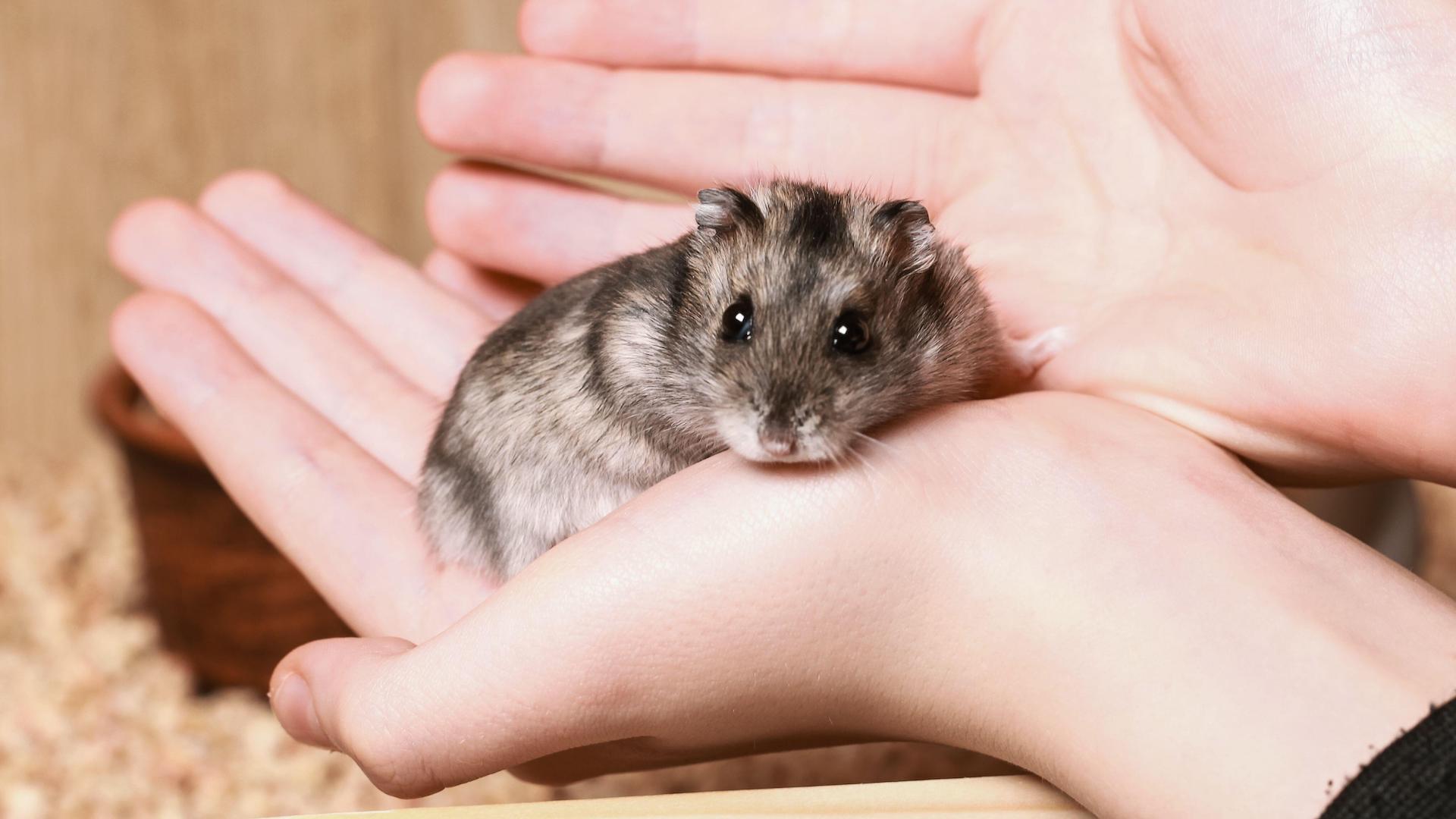
Having been a hamster parent myself for many years, here are my top hamster care tips to keep your hamster happy and healthy. Hamsters are a super first-time pet –they’re tiny, adorable, and always up to something fun!
Whether they’re zooming around in their wheel or stuffing their cheeks with food, hamsters have a way of making us smile on a daily basis. While they may seem low-maintenance at first glance, these energetic little creatures do need a bit of TLC to stay healthy and happy. If you’re a hamster newbie, knowing the right ways to keep your hamster happy is crucial to help these pocket-sized pets thrive.
Here are 32 simple tips to help you keep your hamster in great shape. From selecting the right diet to filling their cage with exciting (and safe) activities, we have the inside scoop on all you need to know.
32 hamster care tips
1. Choose the right cage
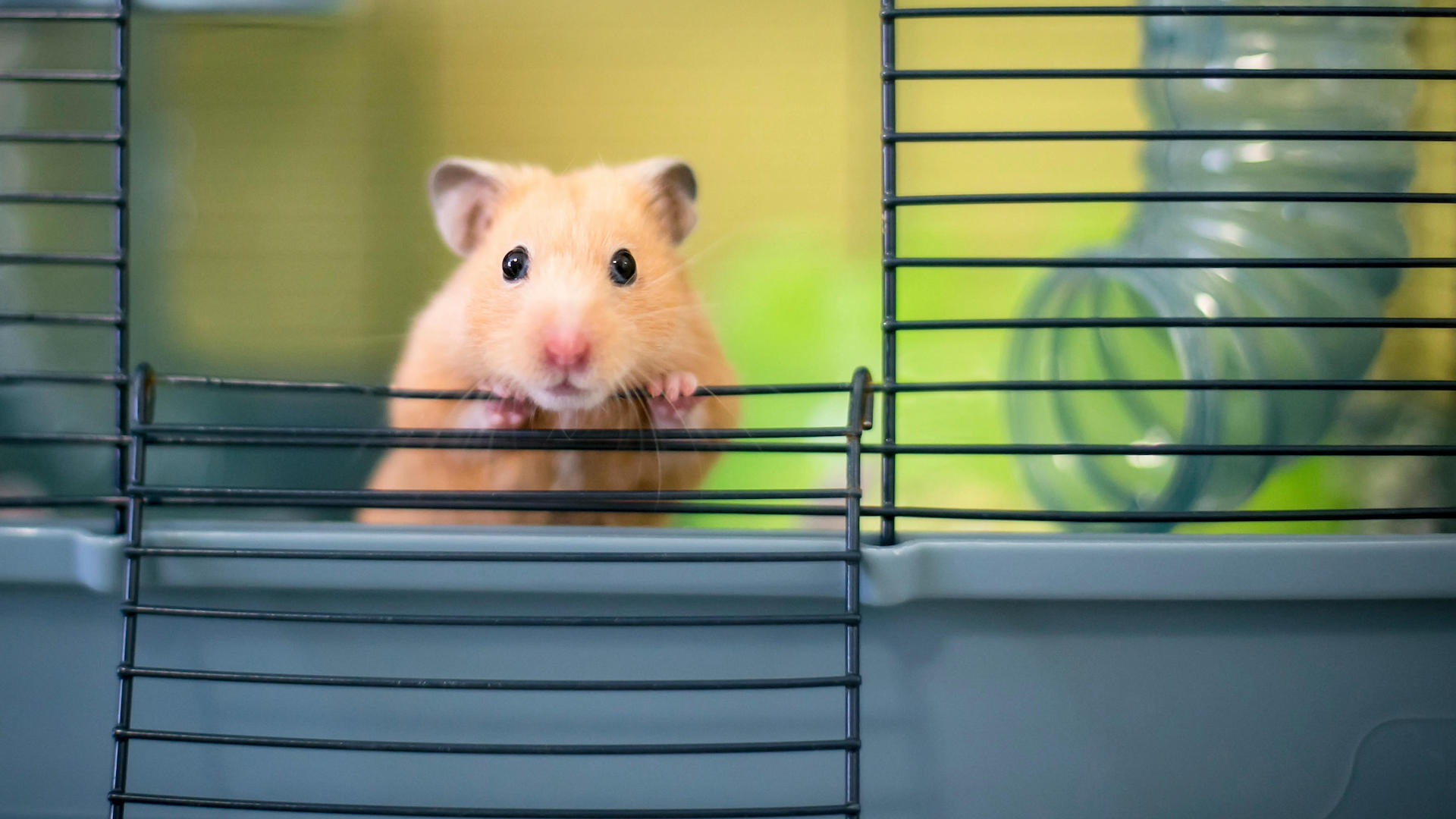
Hamsters may be diminutive but they enjoy having plenty of space. One of the best hamster cages will provide that. Cages are usually made of metal wire, or are tank-style, which is like a plastic aquarium with a lid. The wire cages allow better ventilation, although bear in mind the hamster may try chewing the bars.
The crucial thing is that the hamster has ample space – the bigger the better. A recommendation is a minimum of half a square meter (20 square inches) for the smallest breeds, and 24 square inches for a Syrian (this can include multiple platforms). The PDSA stipulates at least 100 x 50 x 50cm (40 x 20 x 20in), but – put simply – get the largest you can, for a happy hamster. In the wild they can run up to five miles a day (or, more likely, at night)!
2. Type of bedding
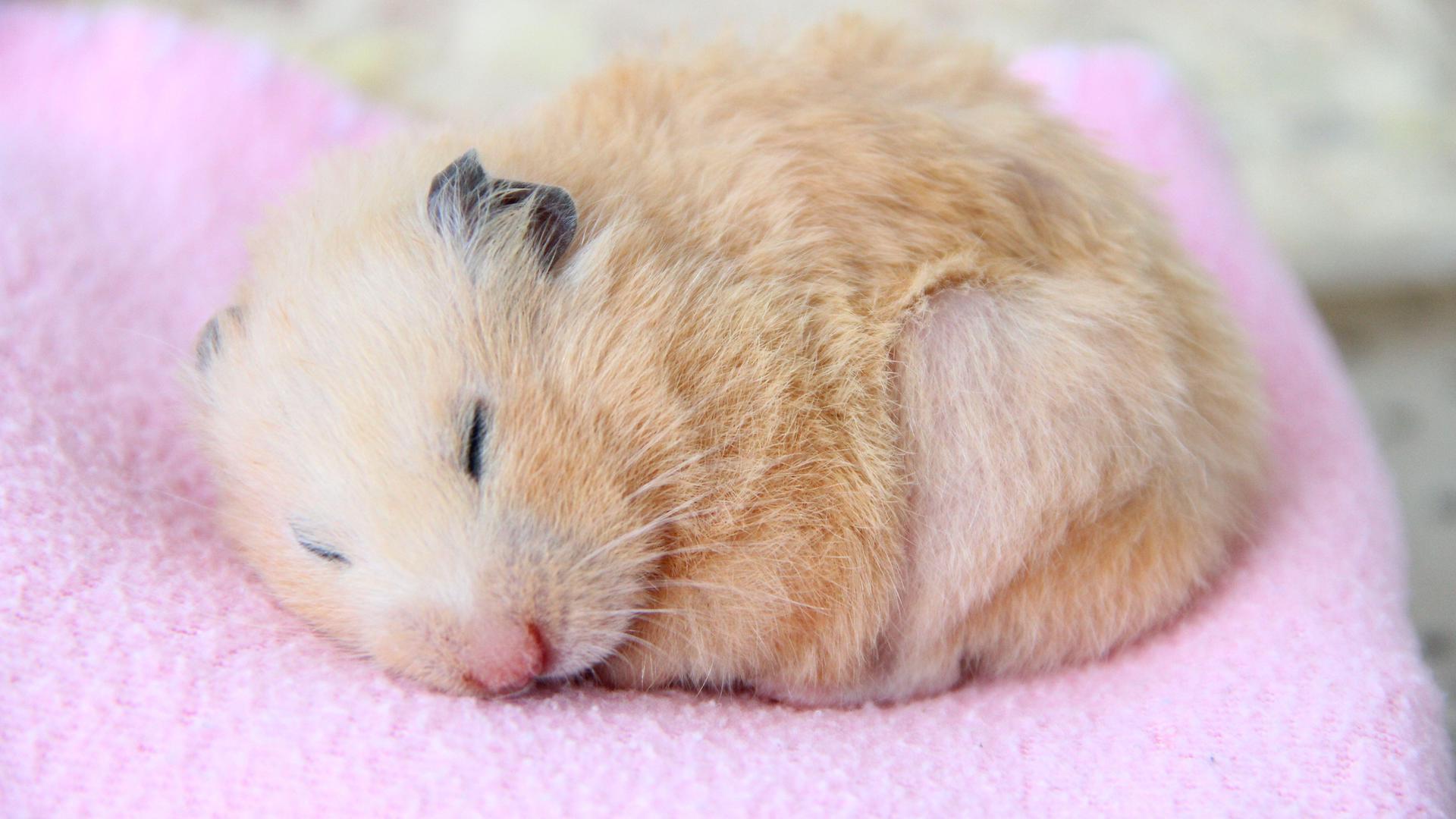
There are plenty of rodent beddings on the market that aren’t actually at all suitable for hamsters. The basic rules are that the bedding should allow the hamster to burrow and nest while being water-soluble and free of toxins in case the hamster decides to eat it. Scented bedding may smell appealing, but it’s full of chemicals and therefore unsuitable.
Wood shavings are complicated because there are good and bad woods. Avoid pine and cedar. Cat litter is suitable as a substrate, but needs to be covered with something less dense and softer to allow the hamster to burrow. However, avoid the super-fluffy kapok as it can cause blockages if ingested and the fibers can wrap around delicate feet.
Get the best advice, tips and top tech for your beloved Pets
A soft, undyed, paper-based bedding is ideal.
3. Cleaning schedule
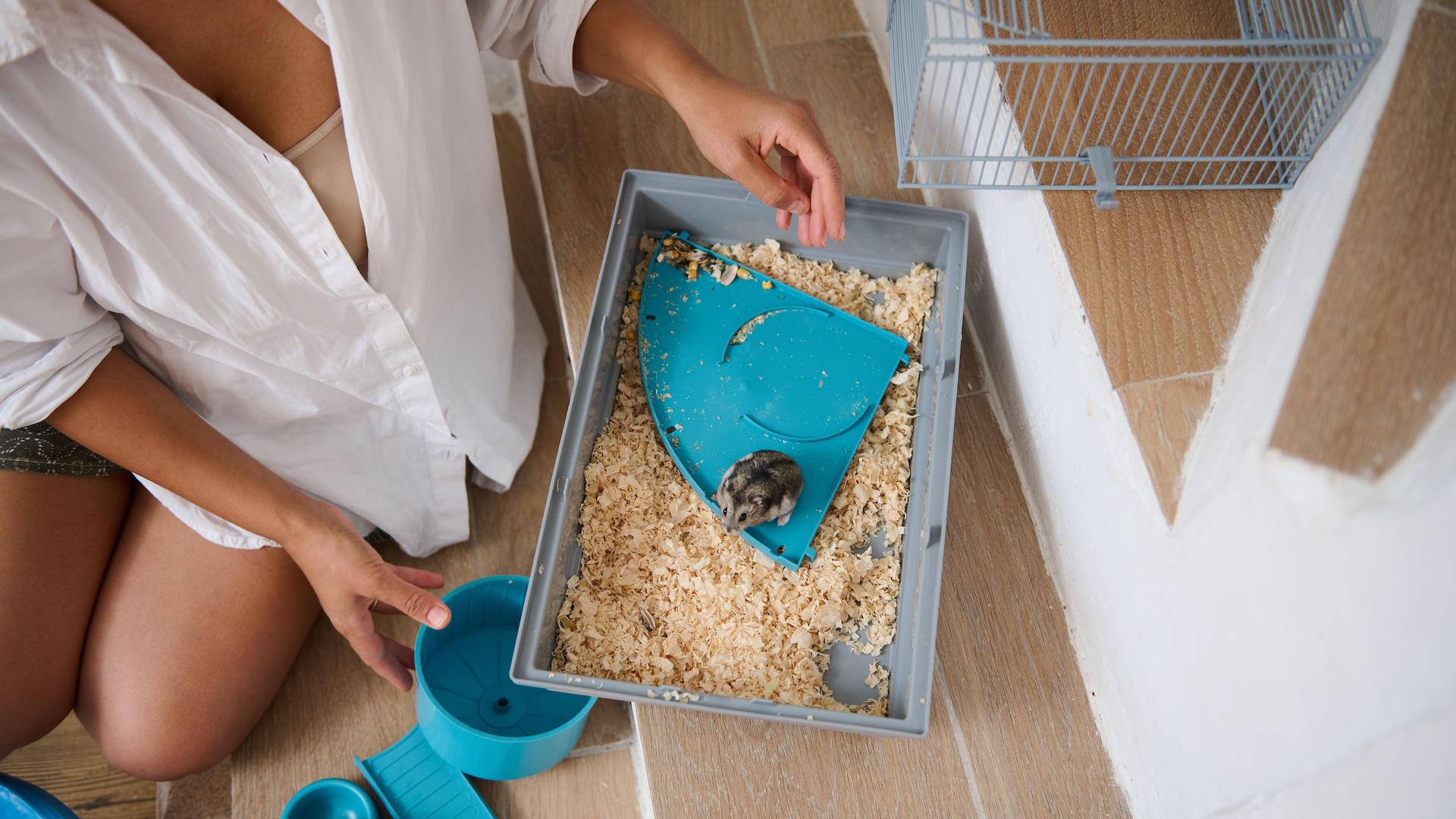
As pets go, hamsters are fairly clean animals, with minimal smell – especially the females. However, you should still clean the cage out every couple of weeks or so, as well as spot-cleaning on a more regular basis.
4. Happy hideouts
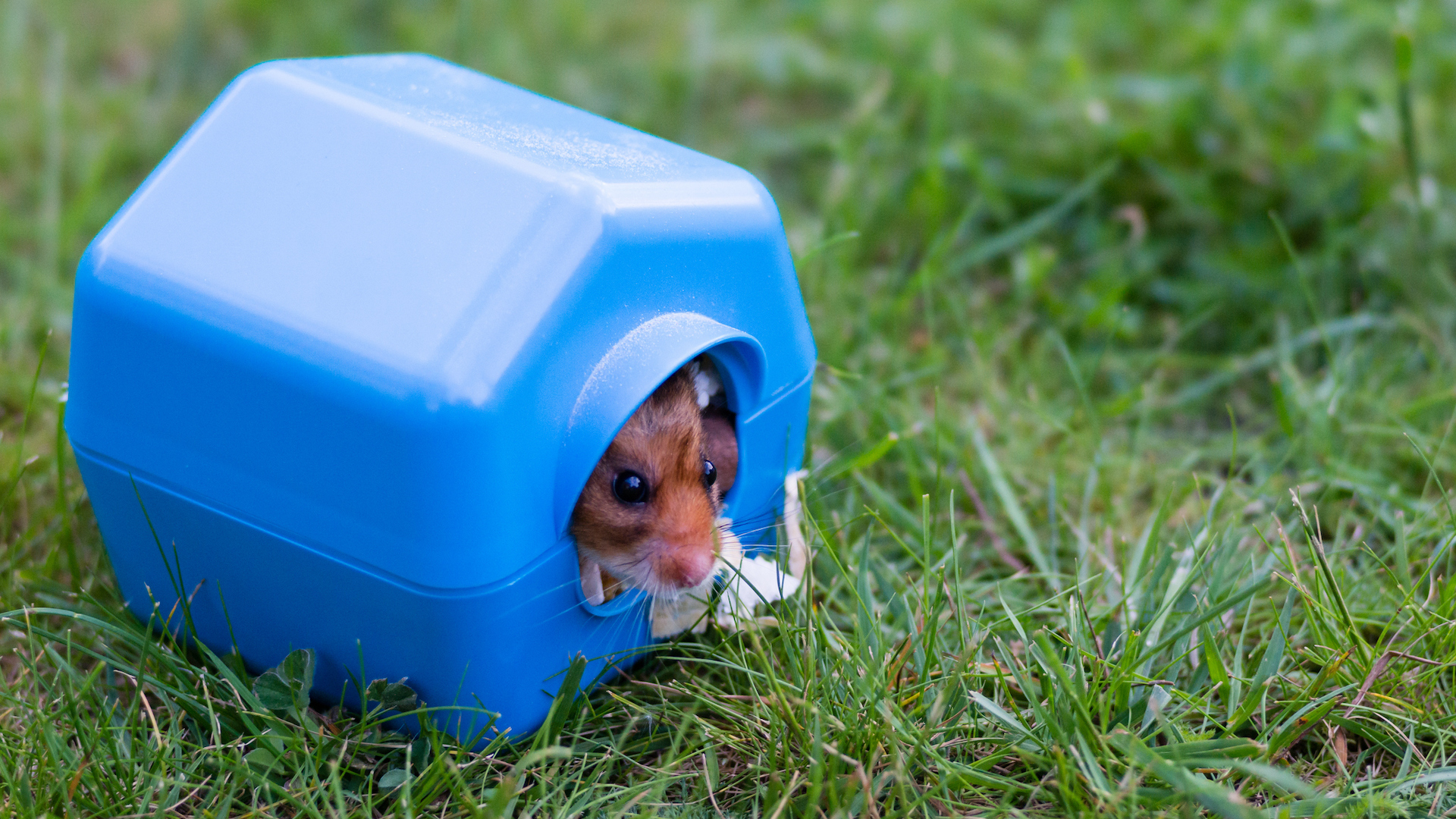
As hamsters are prey animals, wide open spaces can be scary. Make sure your hamster has plenty of nooks and crannies where he can dive for “safety” as he will feel vulnerable resting without cover.
5. Exercise wheel
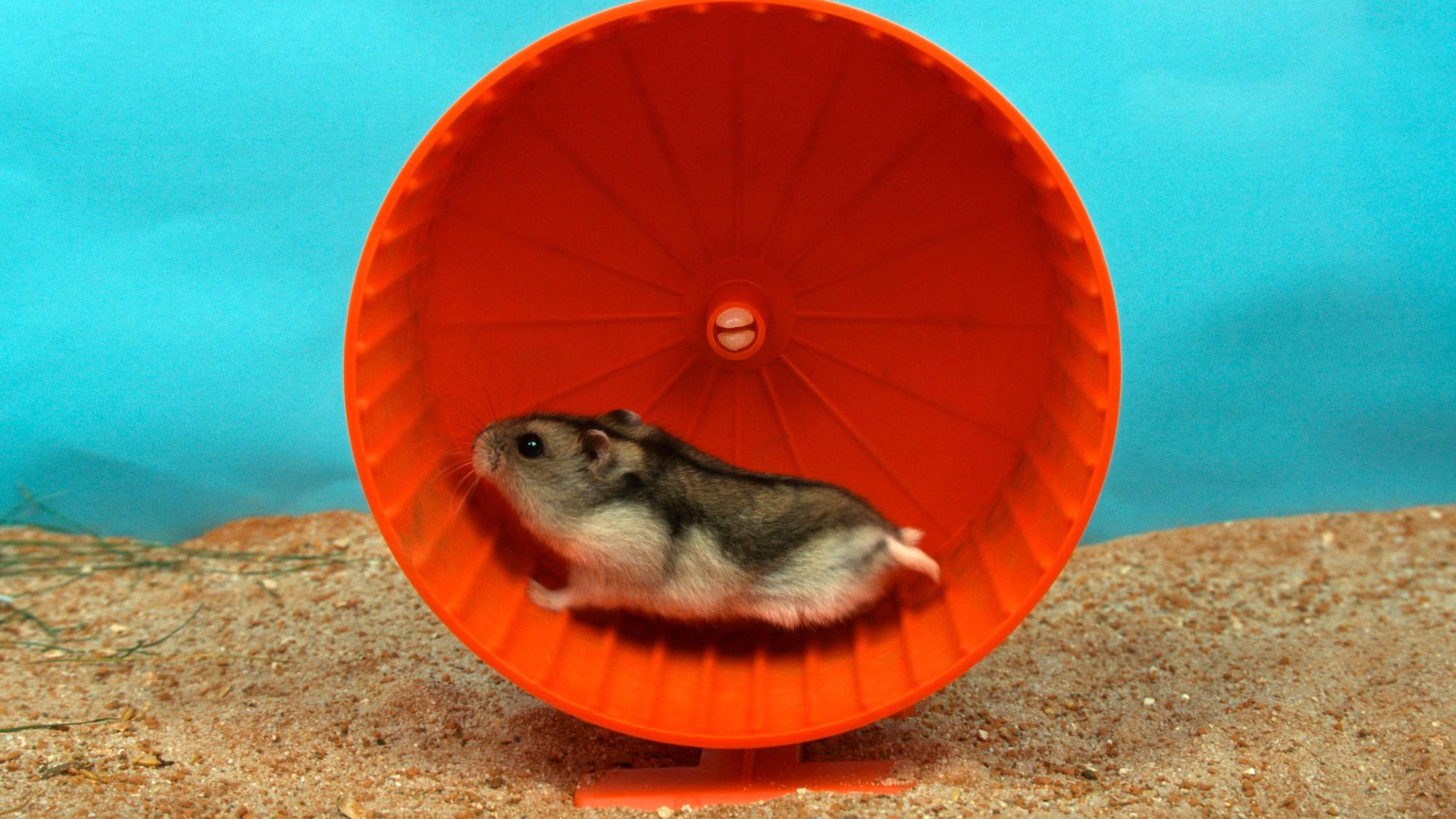
Hamsters in the wild run over five miles a night, and your pet hammy will be similarly energetic. Naturally, you cannot provide a cage large enough to allow him to rack up quite such mileage, but a hamster wheel is the ideal solution. Hamsters are incredible in the way they pound on their little treadmill for hours on end – they’d put any human gym bunnies to shame!
Choose your hamster wheel wisely – a solid one is better as their little feet can get caught in the gaps of a wire one. You’ll also need to ensure the diameter is sufficiently long so as not to cause them to arch their back as they sprint.
6. Chew toys
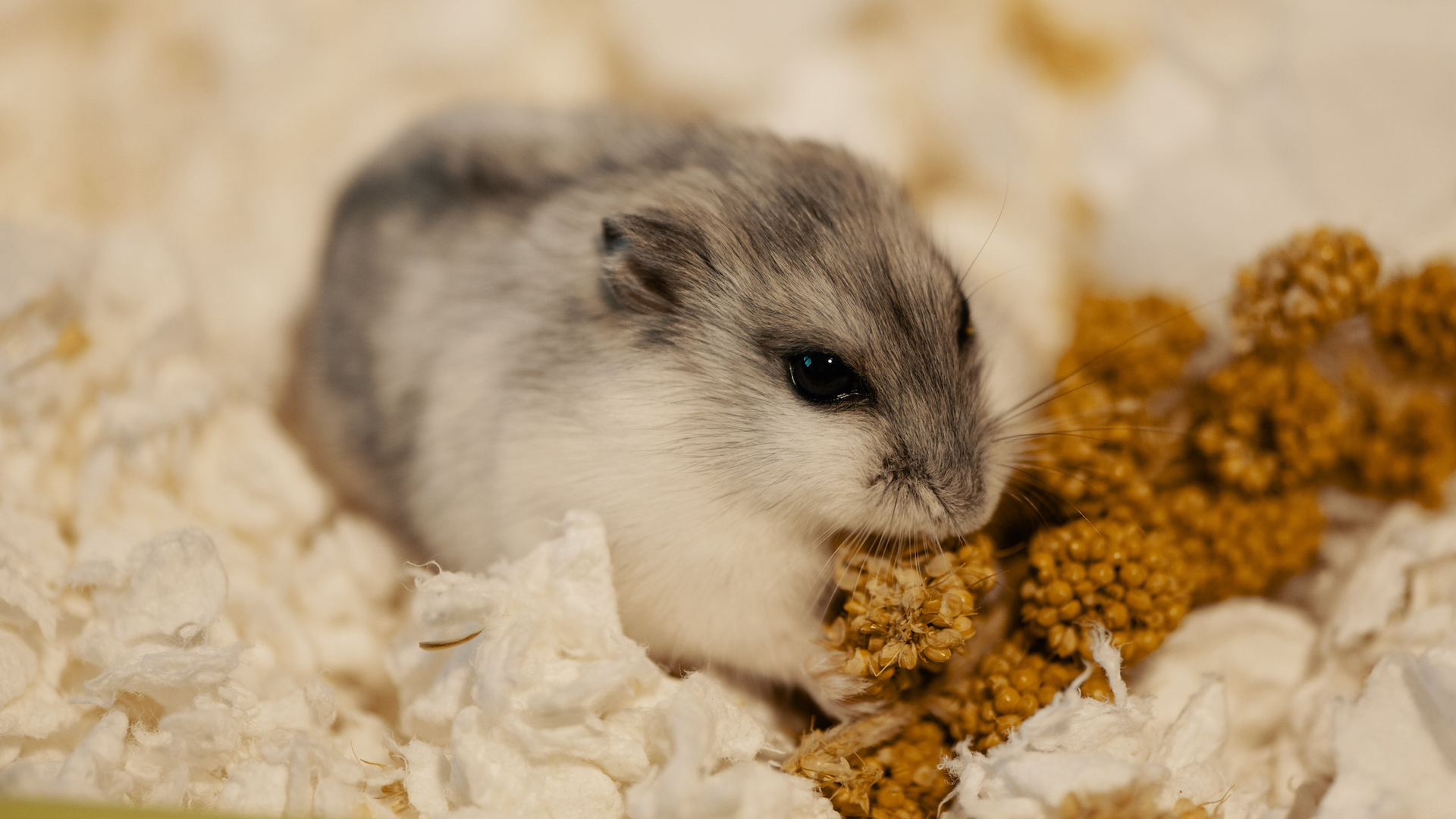
Hamsters’ teeth never stop growing, so they need chews to gnaw on to wear their teeth down. You can get some of the best hamster toys at pet shops, avoiding the sugary treats. A good option is untreated wood, but it’s wise to have a few different toys dotted around the cage to encourage foraging and prevent boredom.
7. Fresh water
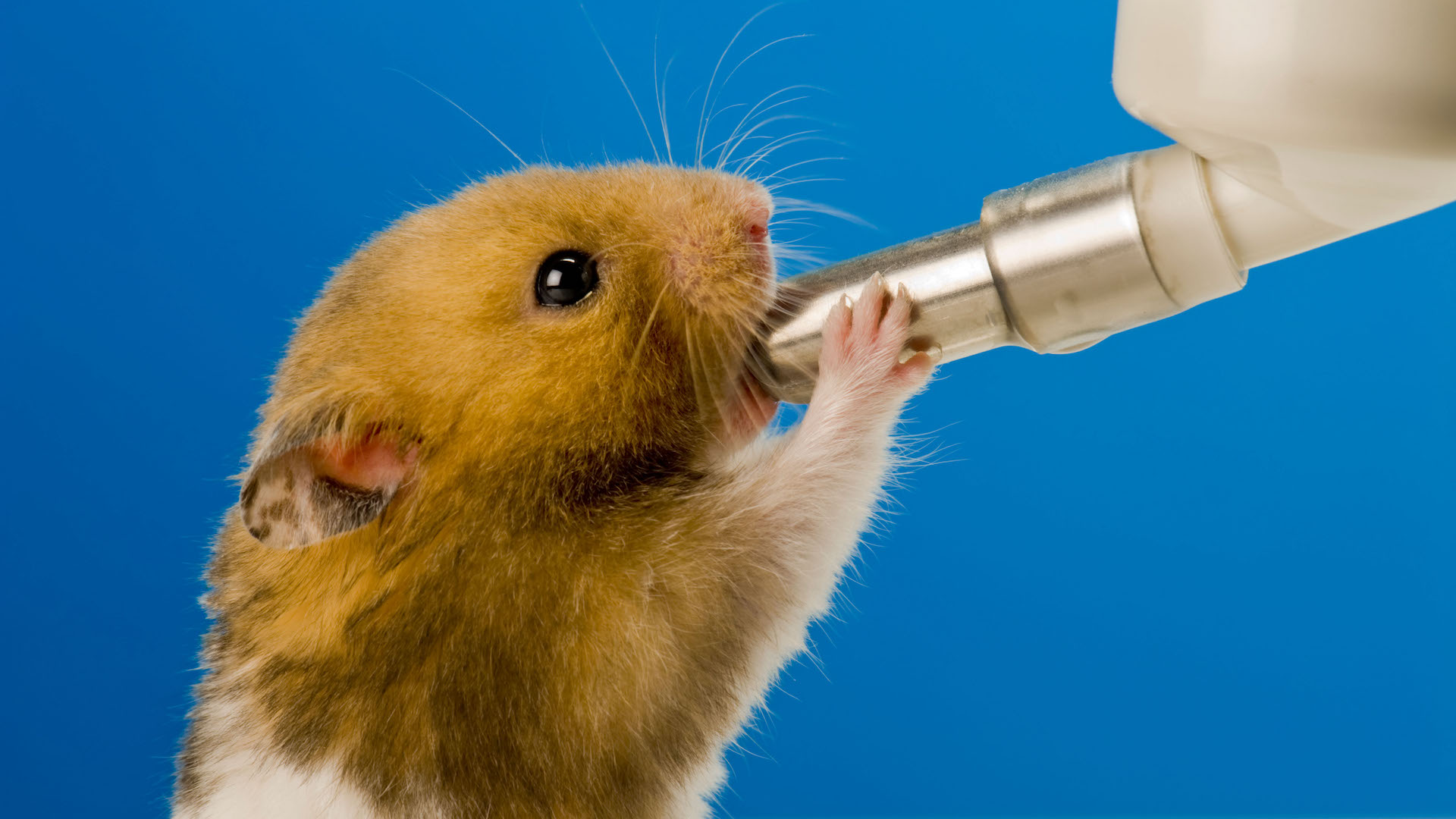
Many hamster breeds come from desert areas but that doesn’t mean you can withhold water. Always provide 24-hour access to clean, fresh water, ideally in a sipper water bottle with a metal spout and ball bearing that prevents dripping.
8. The right diet
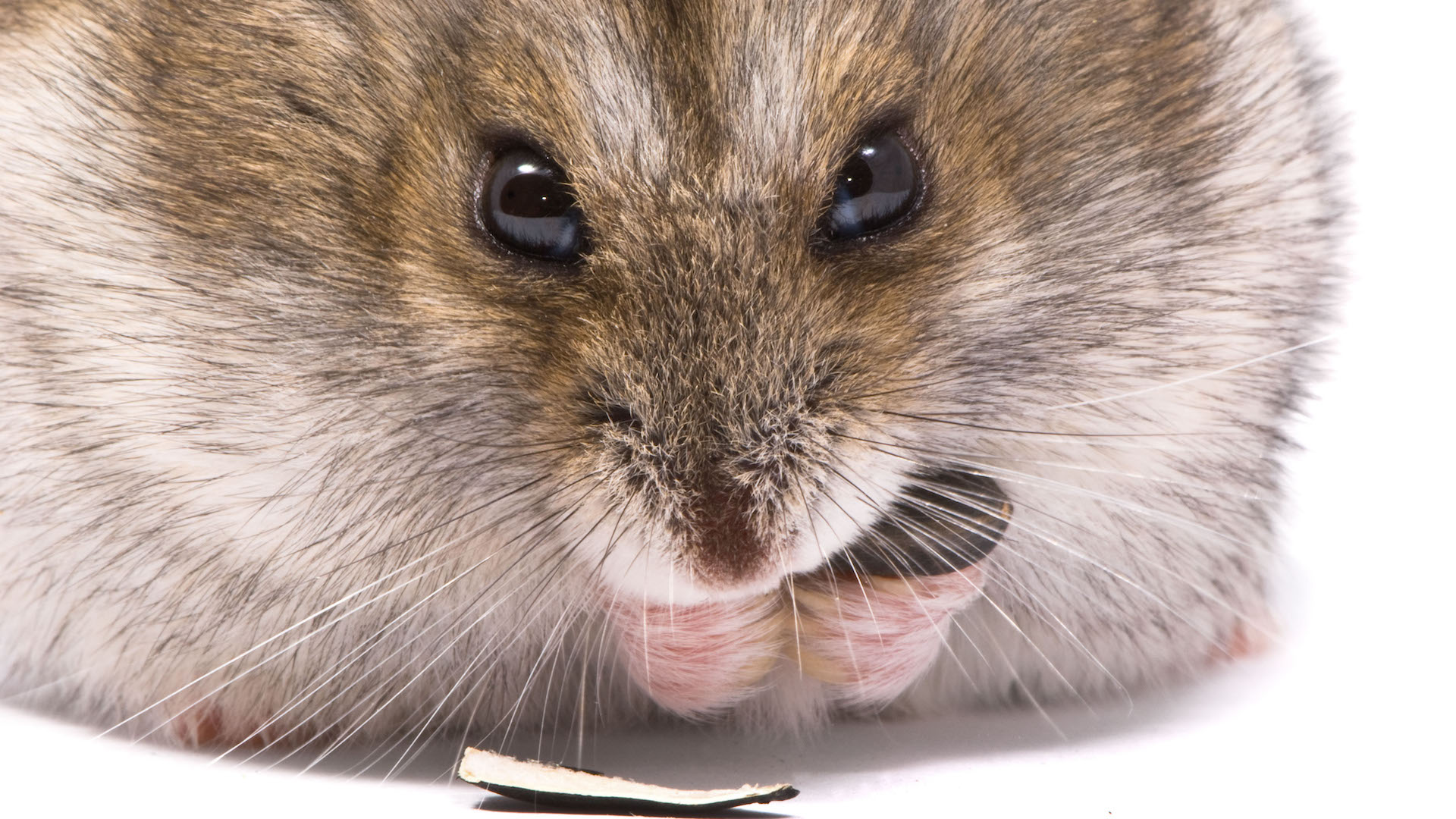
Wild hamsters eat seeds, cereals, insects, and larvae. The diet we feed these omnivorous creatures should provide all the essential nutrients.
A specifically formulated hamster pellet is ideal, as well as tiny amounts of vegetables or fruit. They can also have some nuts and seeds, millet, mealworm – and even boiled egg for additional protein. Be sure to read up on what hamsters can eat if you are offering any additional food.
Feed from the floor of the cage, either in a flat bowl or directly on the floor. The hamster is likely to squirrel some away in their pouches and take it back to their den for safekeeping.
Do not feed wet food unless specifically advised by your vet as it can cause problems with their pouches.
9. Treats in moderation
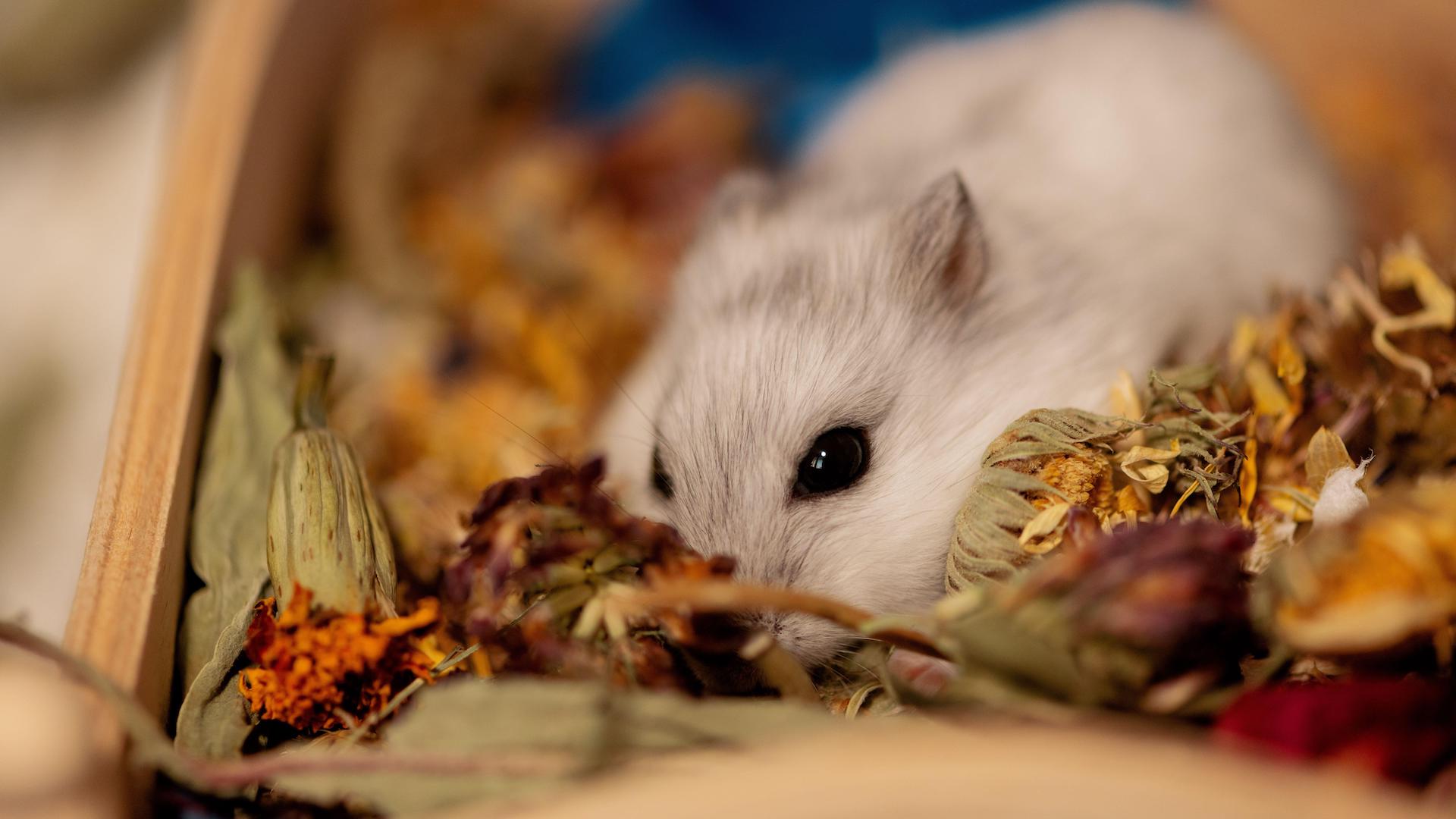
If you compare your size and the treats you eat with the respective size of a hamster and his appropriate treat size, you’ll appreciate just how small any additional snacks should be. One tip is that their treats should be no bigger than their ears!
Sugary treats are not appropriate; instead, a teaspoon of hamster-safe fruits or veg, a millet spray, or half a walnut or cashew (always unsalted) are more suitable. They tend to love sunflower seeds and enjoy cracking open the shells. Dried insects such as crickets and mealworms go down well too.
10. Toxic foods

Although hamsters are omnivorous – literally meaning “all-devouring” – there are plenty of foods that hamsters shouldn’t eat. If in doubt, do not feed it, as hamsters have adventurous palettes and might well gobble up something entirely unsuitable with potentially catastrophic consequences.
11. Ambient temperature

Hamsters are great companions for humans because they tend to thrive in similar temperatures to ourselves – around 20–22ºC (68–72ºF), with decent tolerance for a bit above or below.
12. Handle with care
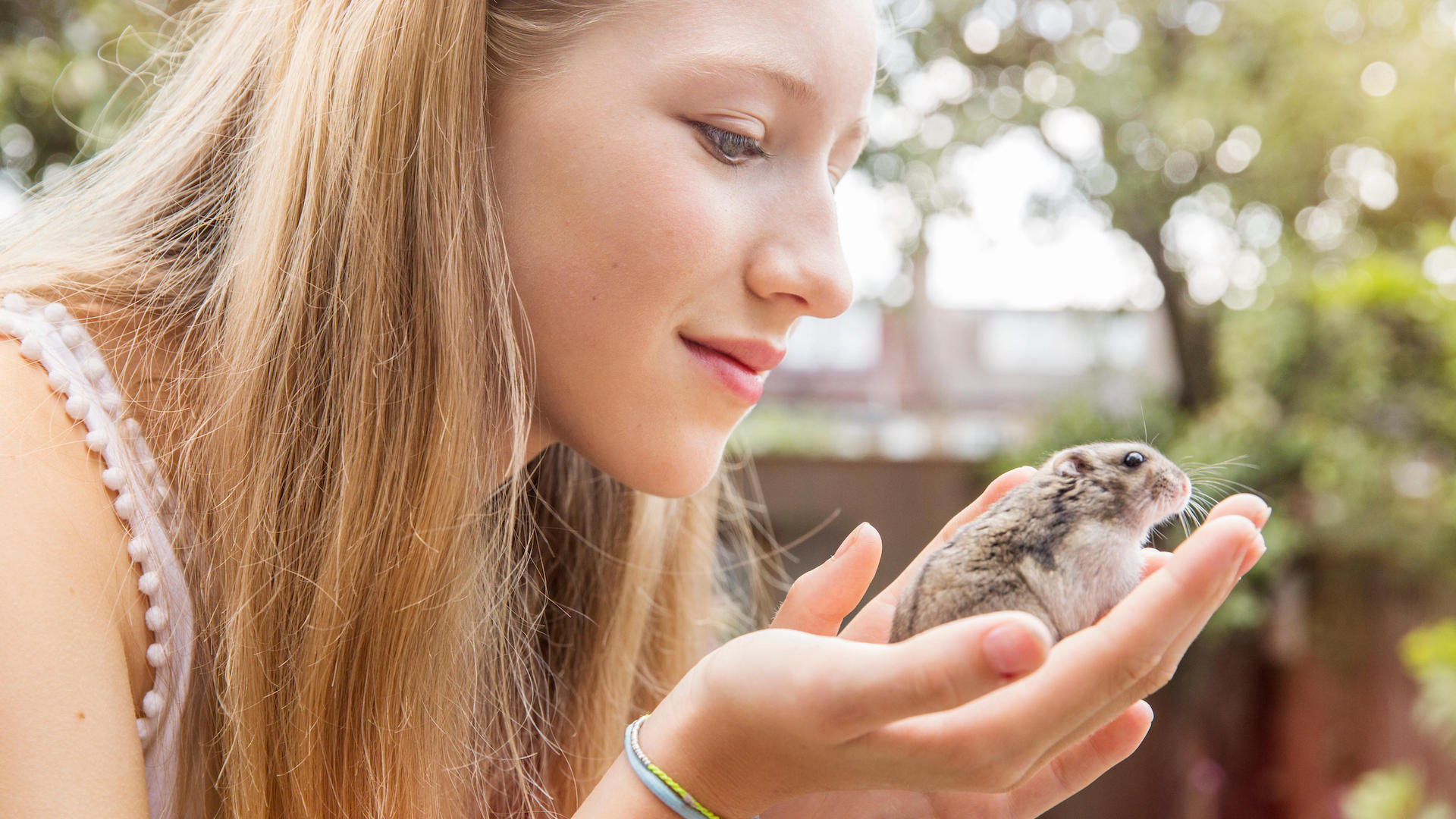
Although hamsters are often touted as a great first pet, they do need careful handling as they are delicate, fragile creatures and can be a little skittish when young and unaccustomed to being picked up.
For this reason, it’s best left to older children and adults. Some hammies enjoy being handled more than others, and they can bite if they feel threatened. Make sure they are fully awake before trying to pick them up – and definitely don’t grab them while they are sleeping so they are not taken by surprise.
13. Social preferences
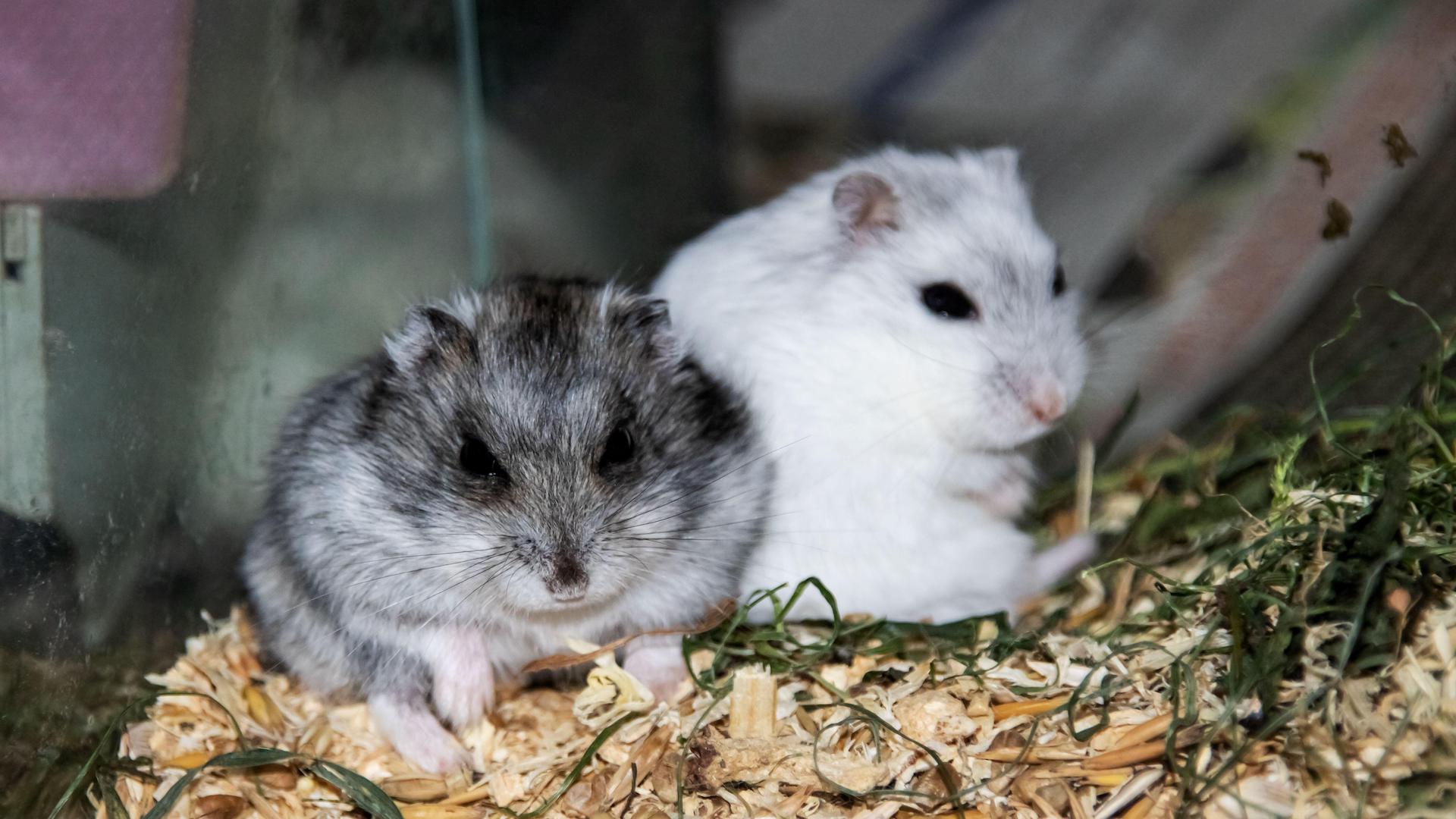
Do hamsters get lonely? Different hamster breeds and genders have contrasting social preferences. Most hamsters are solitary creatures who only congregate to mate, fight, or raise pups. Some dwarf hamsters may live together – providing there is enough room – but males will nearly always fight due to their territorial instinct. This is a pet so sure of itself that it doesn’t need like-minded company.
14. Noise levels

Hamsters have poor eyesight but excellent hearing – they can even detect ultrasonic sounds. This also means that loud noises can stress them. It’s best to keep them in the quietest area of the house and consider moving their cage when you’re vacuuming or like.
15. Tunnel lovers
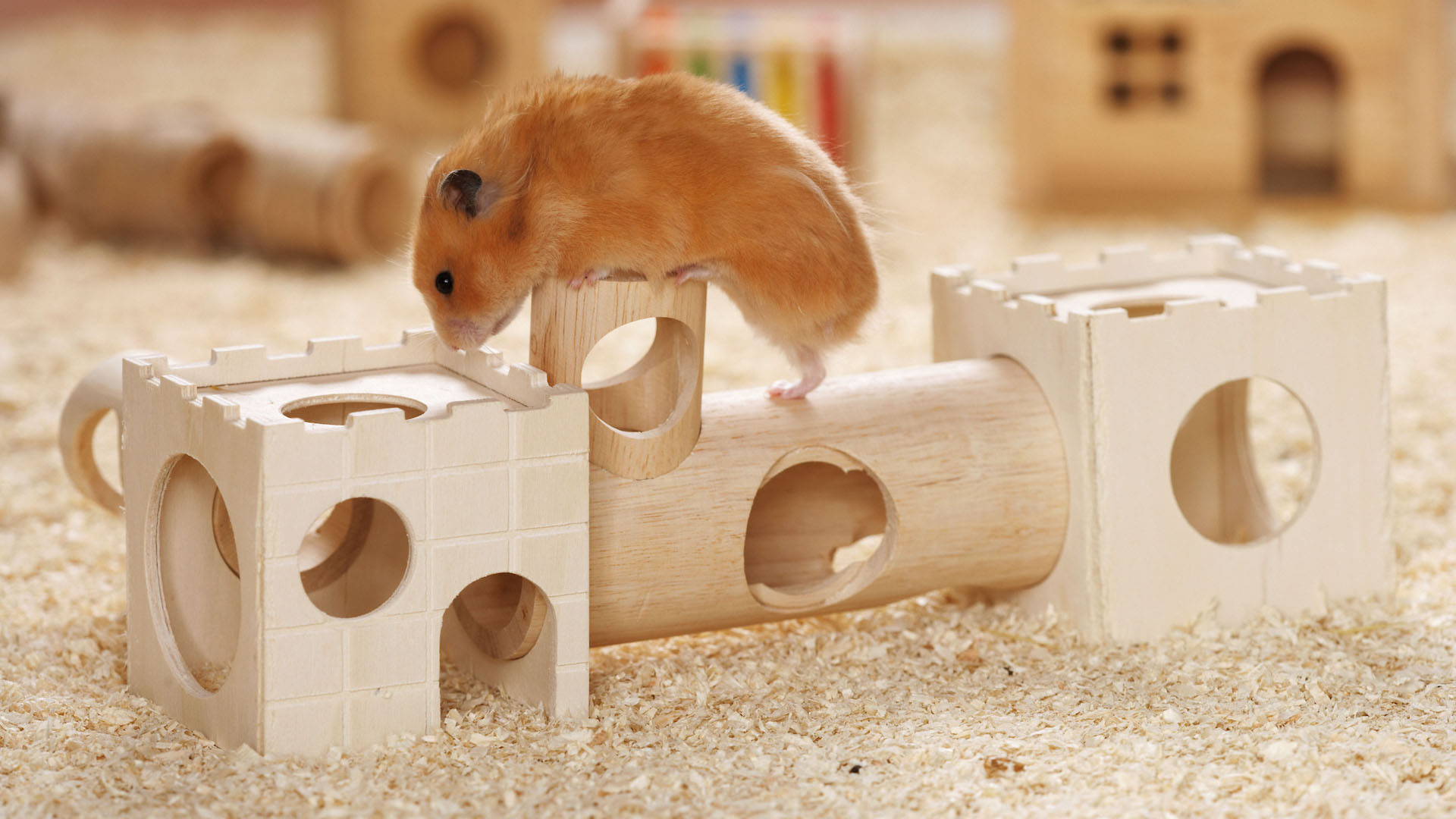
Due to a hamster’s burrowing and nesting instincts, they love a tunnel. In the wild, a hamster might dig as far as 2ft down and will make themselves separate little chambers for various activities, such as sleeping, eating, and going to the toilet.
They may prefer digging their own tunnel but are just as likely to pull bedding into the man-made version and make themselves a new hideout.
16. Pouch care
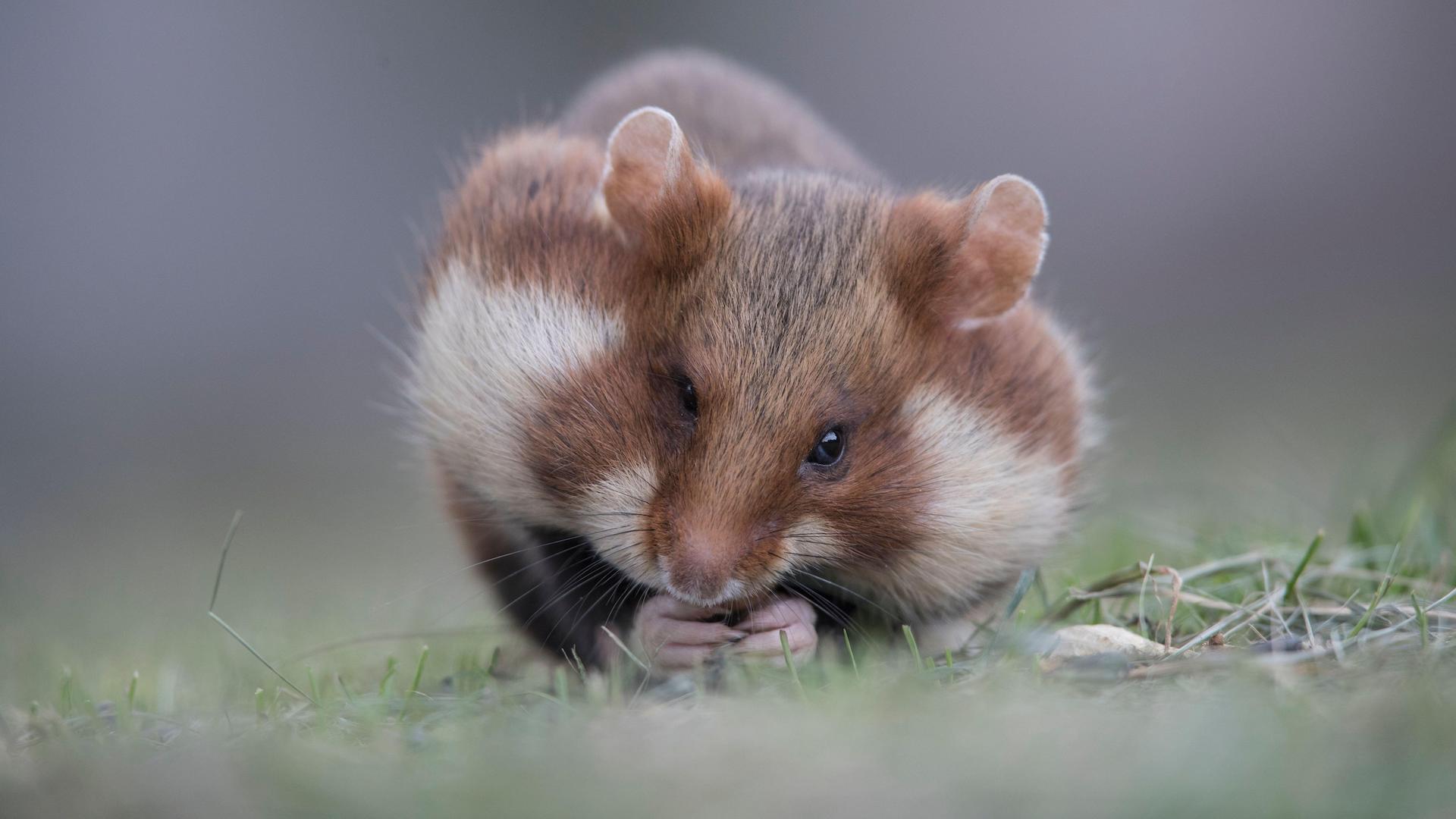
A hamster’s pouches are one of their defining cute features, looking like chubby little cheeks. They stretch all the way back to their shoulders and they use them much like shopping bags to carry food from its source back to its burrow. Keep an eye on the pouches as they can get impacted (wet food can prove problematic), grow abscesses or tumors, or be punctured by an overgrown tooth.
17. Scent marking
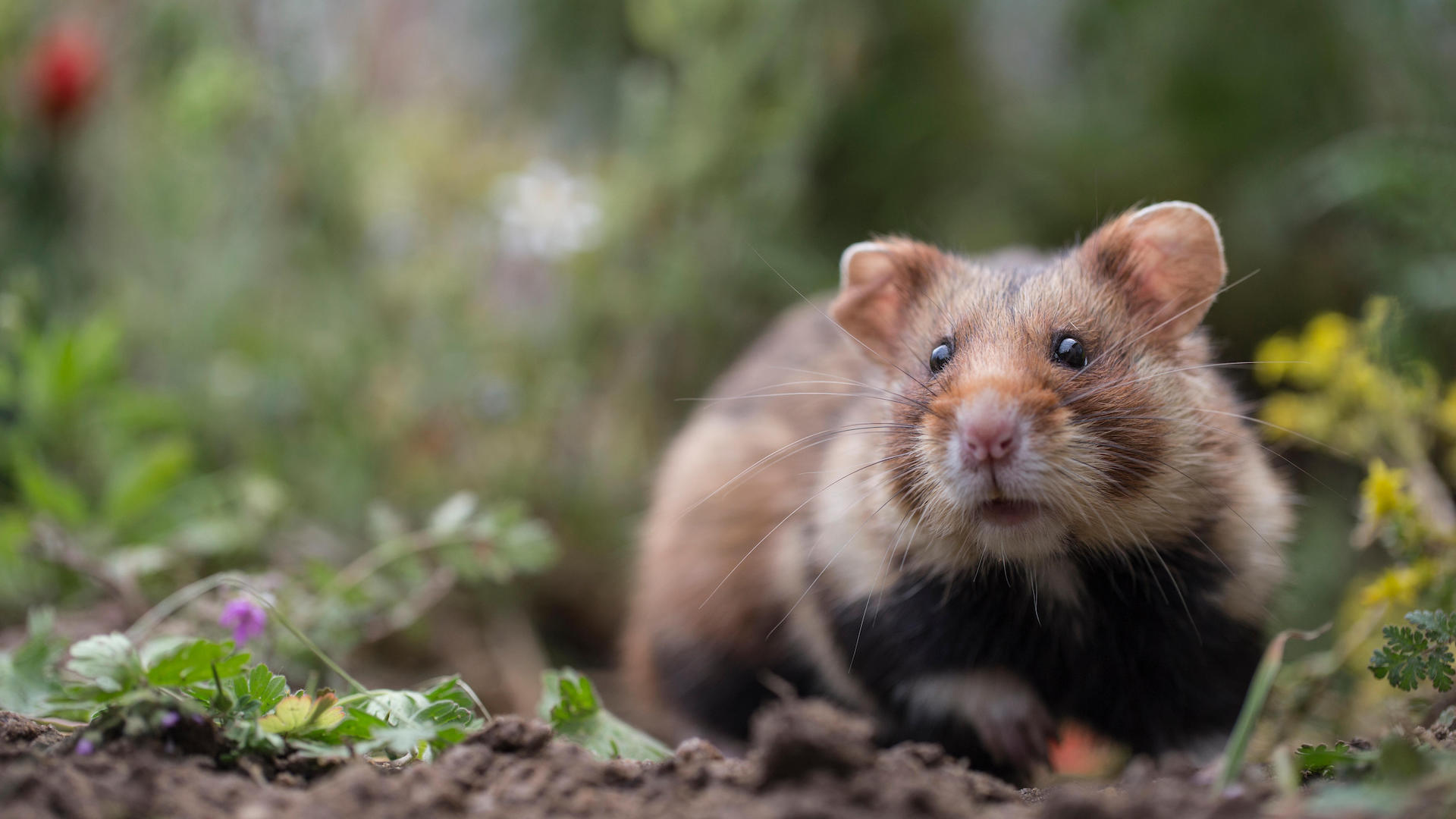
Hamsters have an intriguing mode of communication which is via their scent. More prominent in males, they have glands in various places on their bodies (cheeks, flanks, and genitals) which fulfill many roles, such as marking territory, showing they’re ready for matin,g and asserting their place in the social hierarchy.
As a hamster trots around, it releases pheromones which alert other hamsters to its presence as well as help it navigate its own trail. Obviously, this is more useful in the wild, but pet hamsters will still scent mark their territory in their cages – or even on their beloved owners to claim what is theirs!
18. Creatures of the night
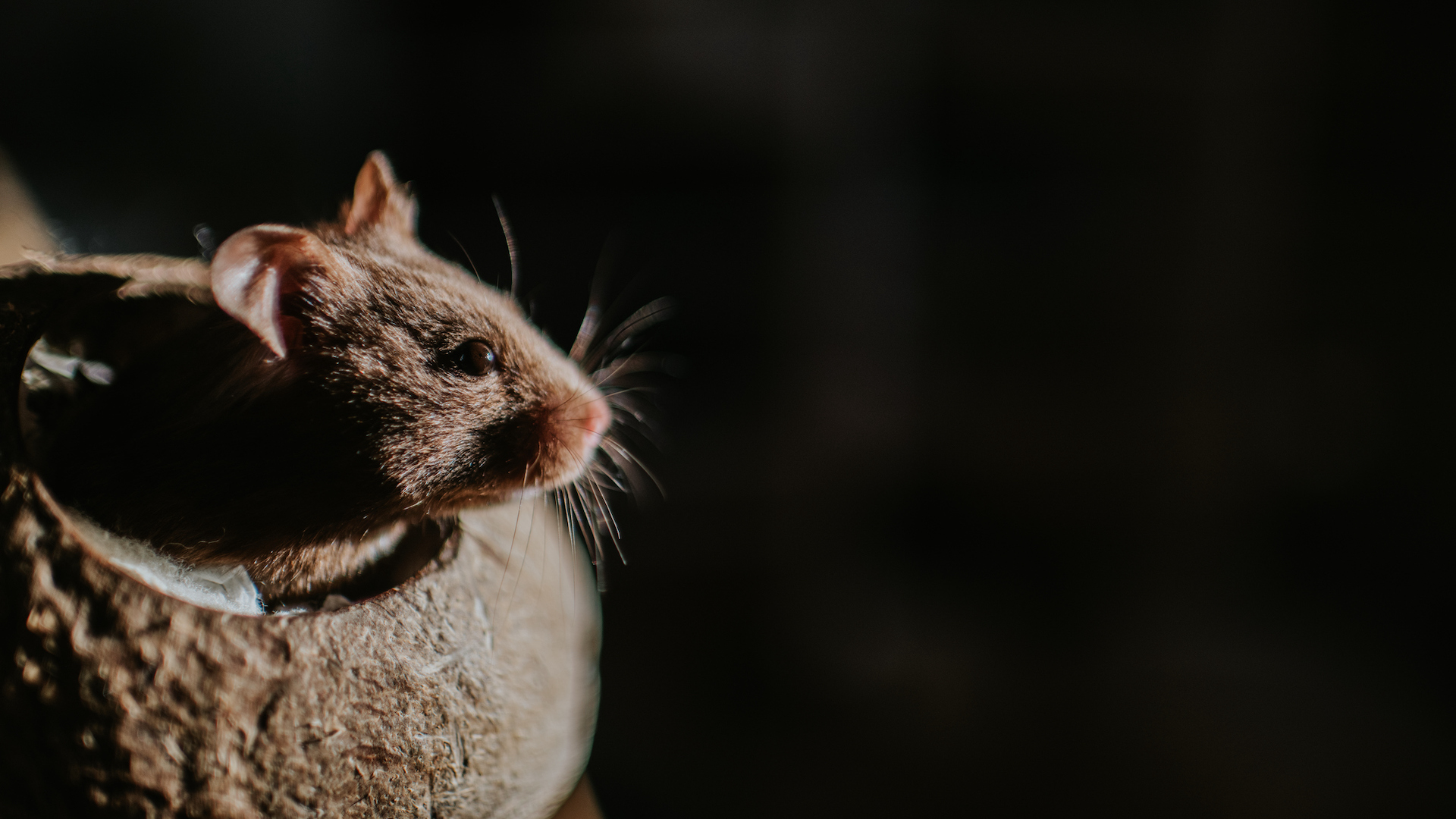
Hamsters are nocturnal creatures, which means they are more active at nighttime – and they may be very noisy as they scurry around on their wheels, generally expending plenty of energy. In common with many other prey animals, darkness gives them cover so that they can gather food and make nests without such a risk of being spotted by predators.
Some sources point to hamsters being crepuscular, as they can show some activity at dawn and dusk, but their main busy period is during the night. For this reason, they can be a little disappointing for very small children, as their waking hours do not coincide!
19. Monitor behavior
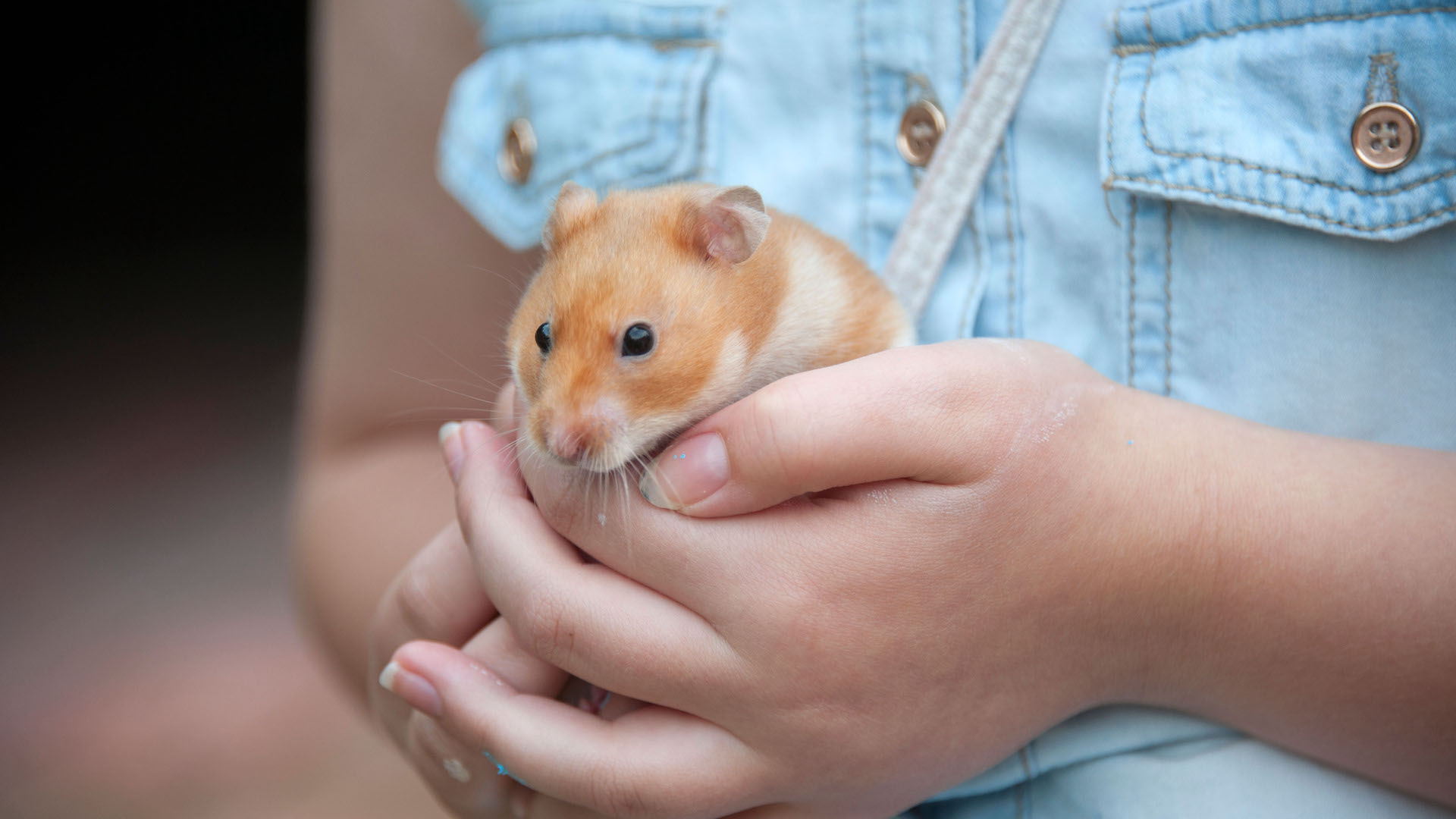
Hamsters can appear quite self-sufficient: exercising vigorously, gnawing on wood to keep their teeth in good shape, and even collecting food to take back to their lair. However, they benefit from interaction – not least because you’ll learn what is normal for them. You should check them on a daily basis, and at least once a week make a closer inspection of their health. Carefully examine their eyes, fur, skin, tail, nails, and teeth to see that all is healthy.
By picking them up regularly, they will be accustomed to the inspection and will tolerate it well, enabling you to pick up any concerns before they become serious.
20. Provide variety
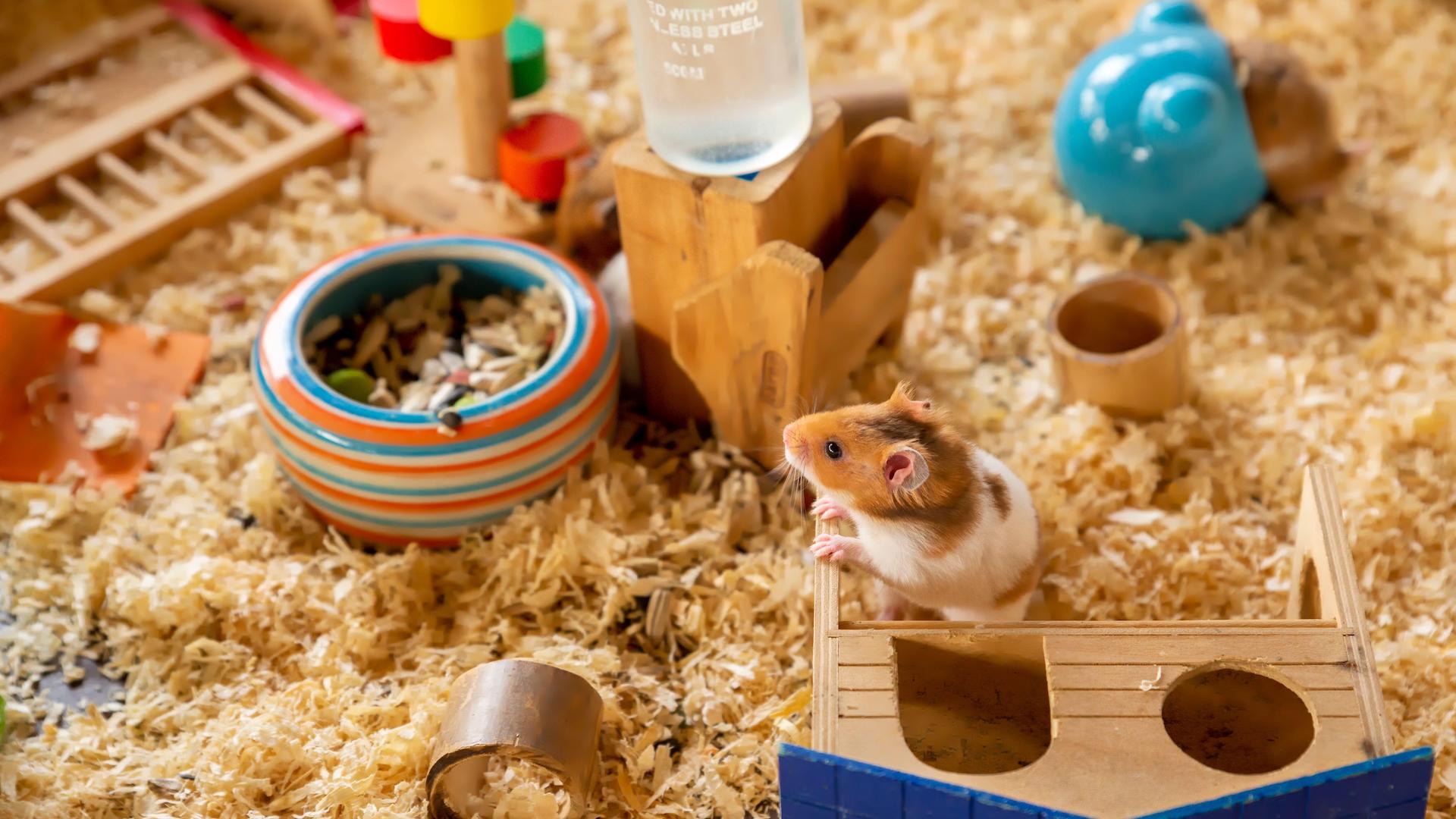
Hamsters are naturally busy animals when they are awake, so it’s good to provide them with plenty of toys, things to chew on places to hide and burrow. Move the toys and food around regularly so that you mimic the idea of foraging and provide variety in their daily lives.
21. Sand bath
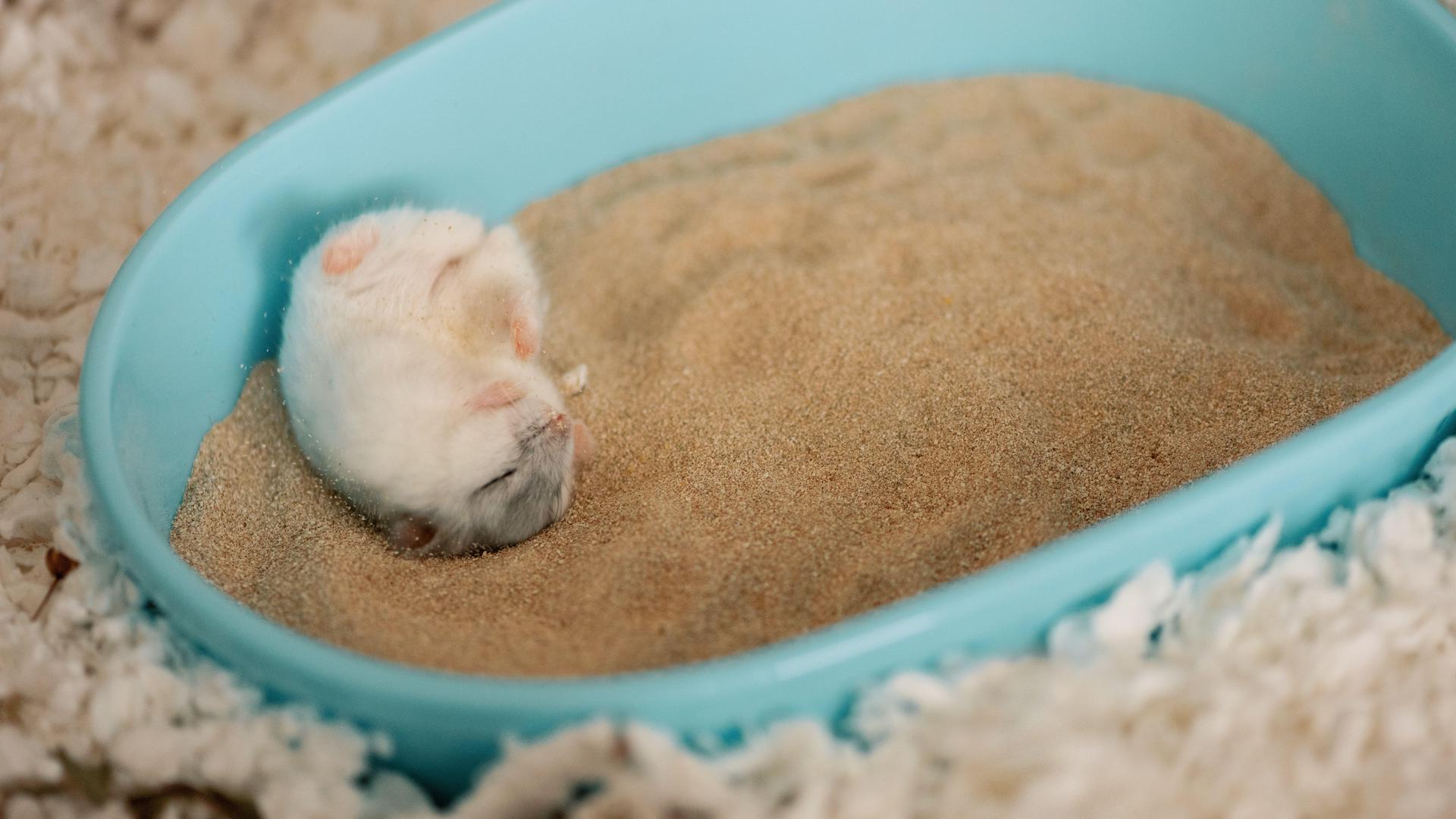
Hamsters do not need bathing in water – in fact you shouldn’t wash them unless specifically instructed by your vet for a particular purpose. However, they do like to bathe – in sand! If you put a tray of hamster-friendly sand (avoid chinchilla dust) in the cage, most hamsters will use it to roll around in. This exfoliates the skin and blots the excess oils, and is a normal daily habit. Be aware that some hamsters (especially the Syrians) might use the sand bath as both a washing and a lavatory facility, so make sure you keep it clean.
22. Pellets or mix
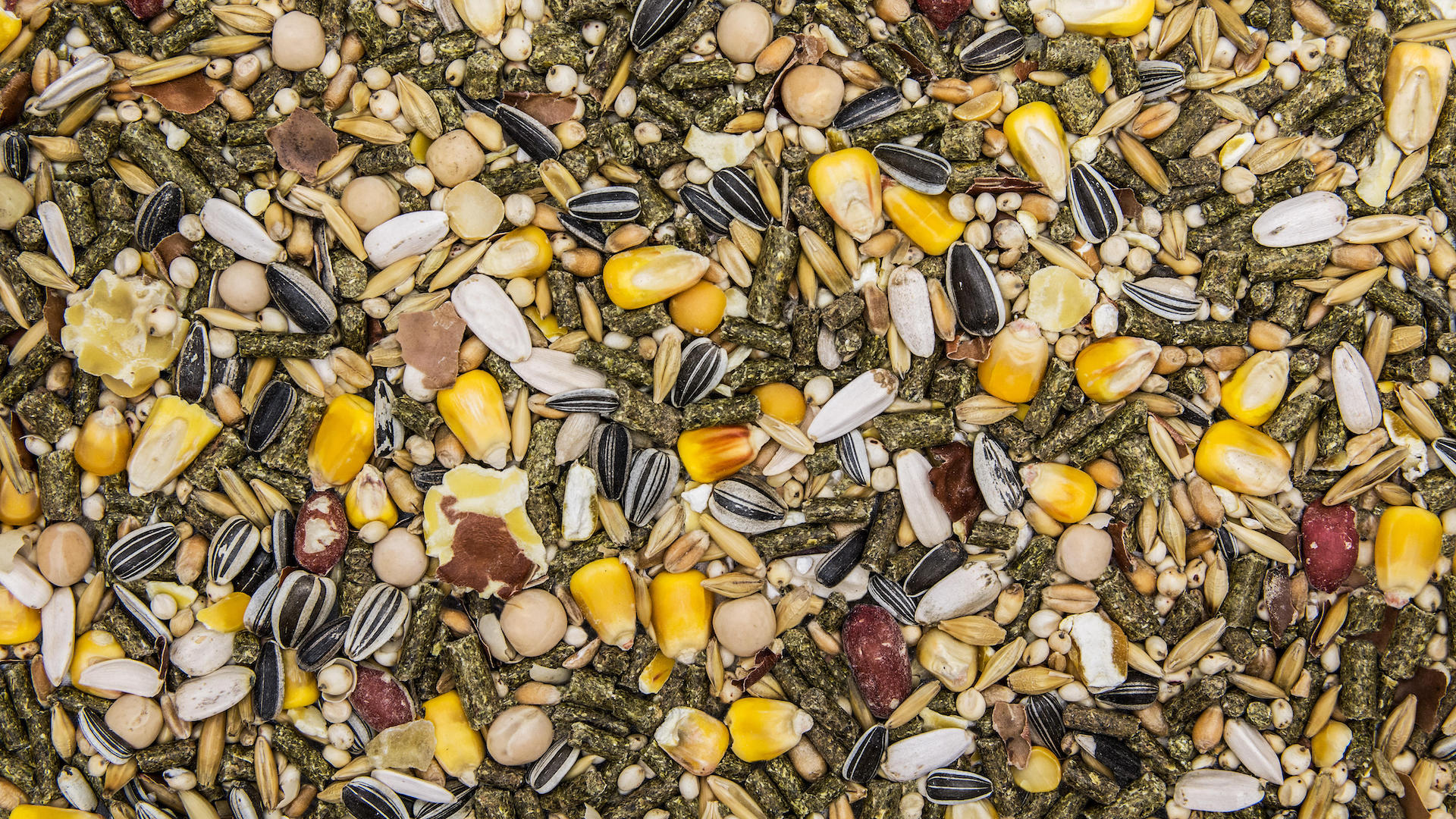
Pellet food is generally recommended as being a better overall diet for hamsters as everything they need is packaged up together. With a mix, they have a tendency to pick out the bits they love (don’t we all?) and therefore might end up being deficient in some nutrients. If you have a hamster that finds pellets boring, one way to get around this is to supplement the pellets with titbits of food they find more interesting, such as nuts, seeds, and insects.
23. Avoid high platforms
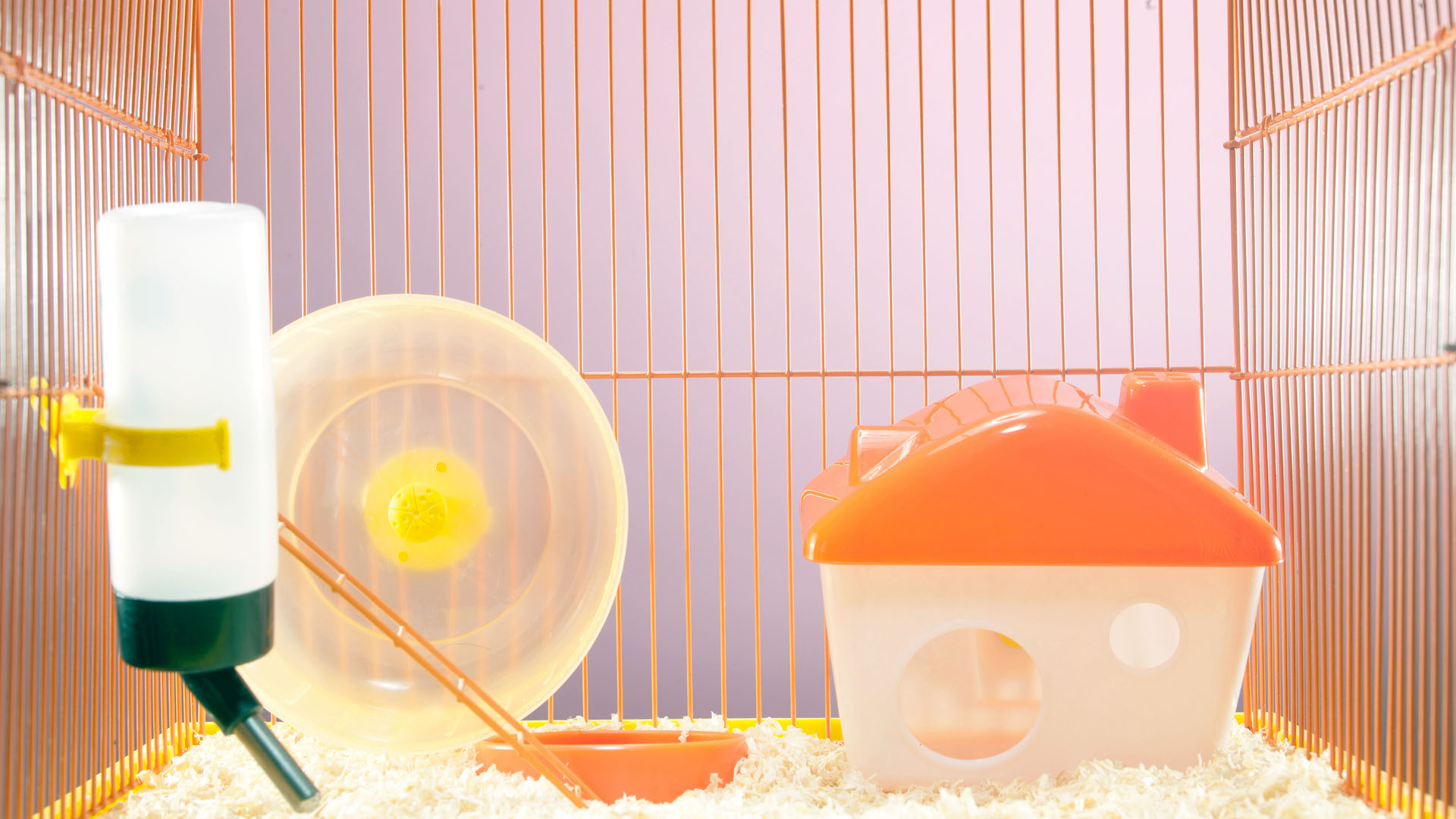
Platforms are a great addition to a hamster cage as they increase the surface area for them to take exercise, and boost their sense of exploration. However, be aware that a hamster’s eyesight is poor, so high platforms can be dangerous if they inadvertently fall off. About 5in (15cm) should be the maximum.
And remember hamsters prefer being below ground to above it, so make sure there are always plenty of burrowing opportunities too.
24. Respect their space
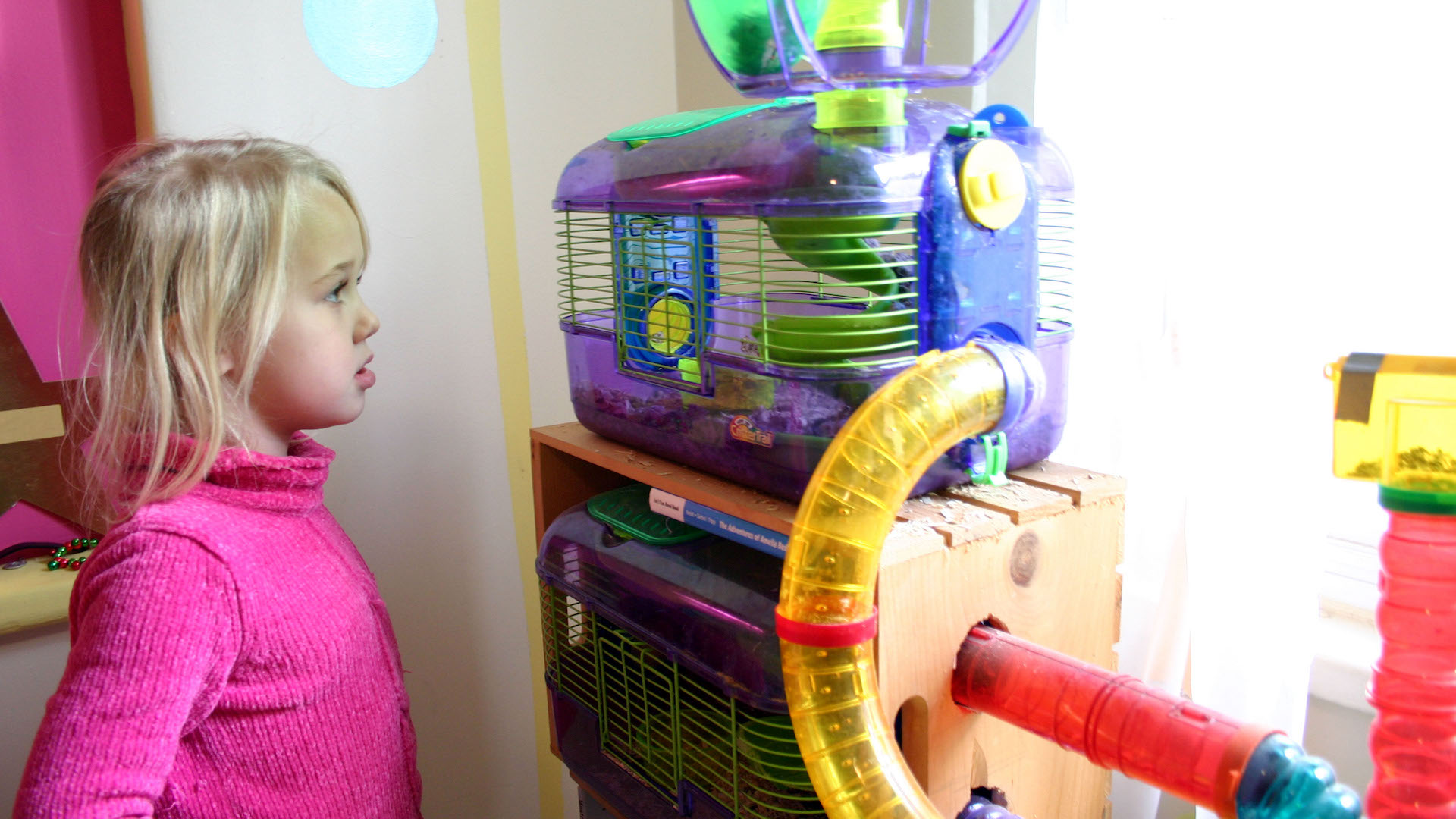
Hamsters are solitary animals by nature, but that’s not to say they do not love interacting with humans as many do. However, always be mindful of how they are handled – they may bite if they feel threatened especially if they are not accustomed to it. Remember that they are naturally nocturnal creatures and you cannot force them to be lively and fun just because you’re up and about. If they are burrowing or seeking a safe haven, leave them to their own personal space.
Try feeding them from your hand initially so they get used to your smell and that good things come from you, and go at the hamster’s pace.
25. Check teeth
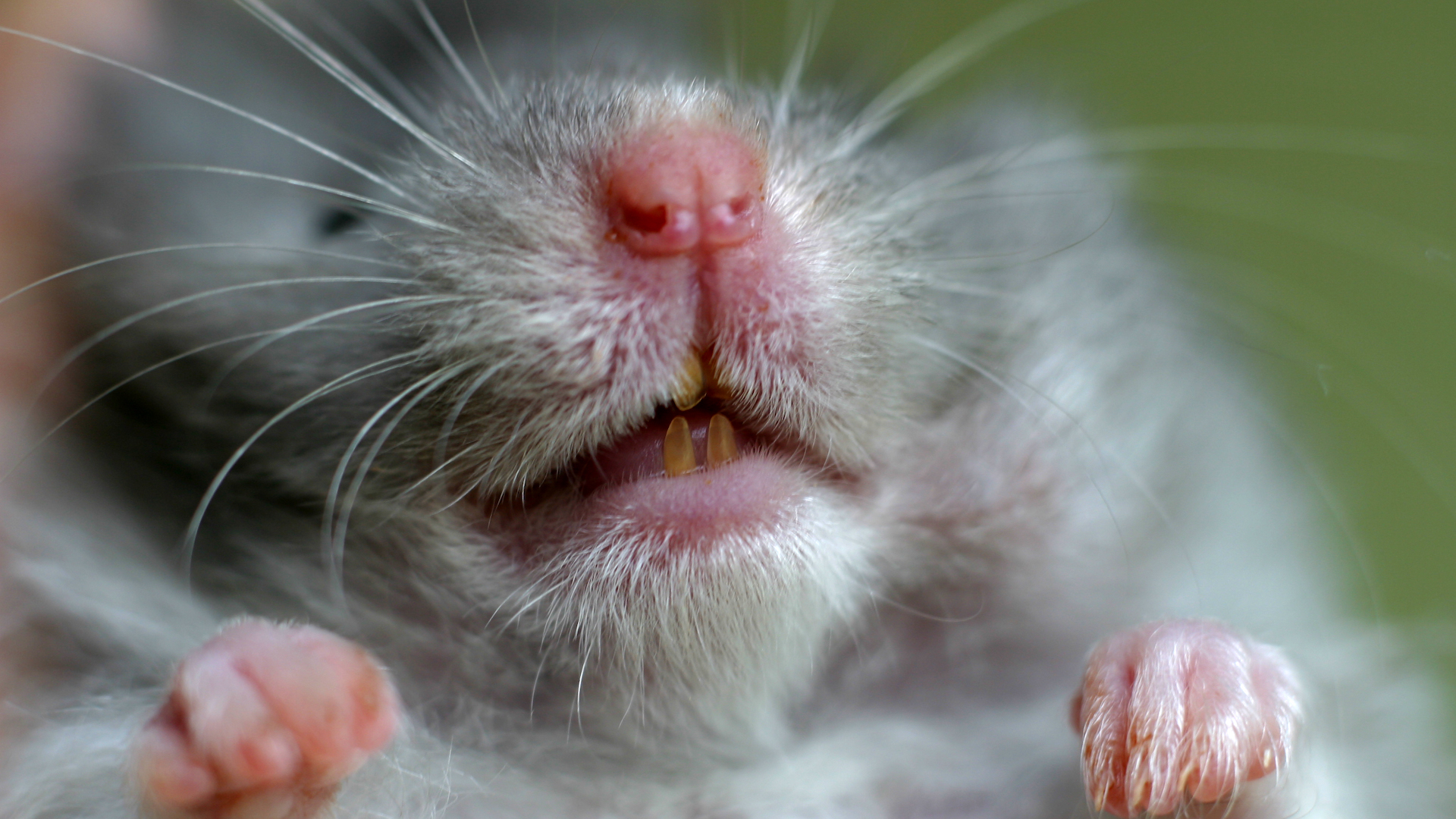
Hamsters’ teeth never stop growing, so check them regularly. If their teeth become overgrown they can cause pain, or cut into parts of their mouth or pouches. If this happens, they may stop eating. At any sign of dental problems take them to a vet, who can file them down.
And always provide gnawing toys for your hamster to wear down his own teeth, preventing the problem from happening in the first place.
26. Wet tail
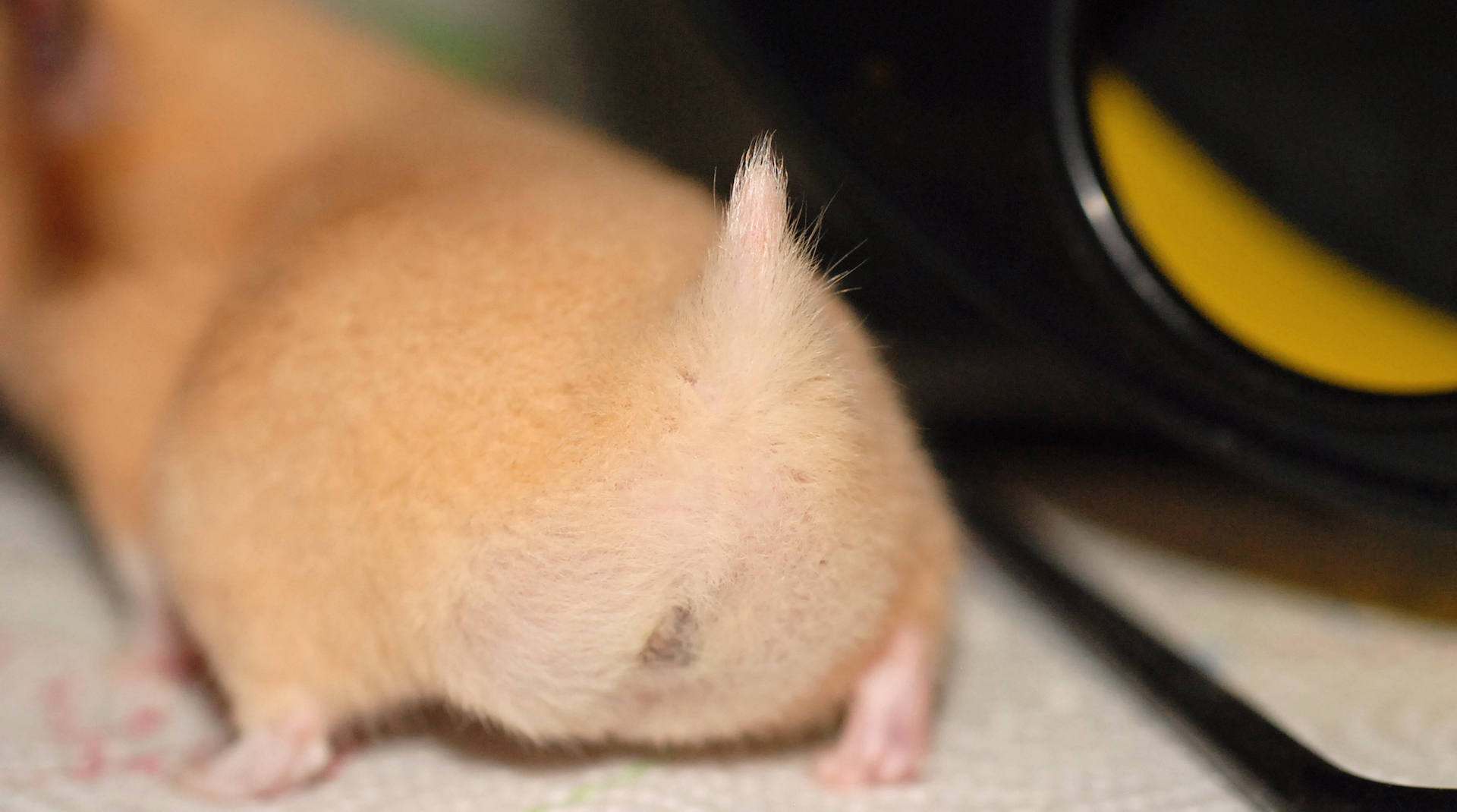
“Wet tail” is a common illness in hamsters, particularly young ones. It is highly contagious and causes diarrhea, lethargy, and loss of appetite.
Hamsters have very short, stubby tails, and the name of this illness more accurately refers to the whole area under the tail and around the anus, which will show evidence of watery stools.
It can be fatal so if you suspect your hamster is suffering, head straight to the vet as they need urgent antibiotic treatment.
27. Furry stressballs
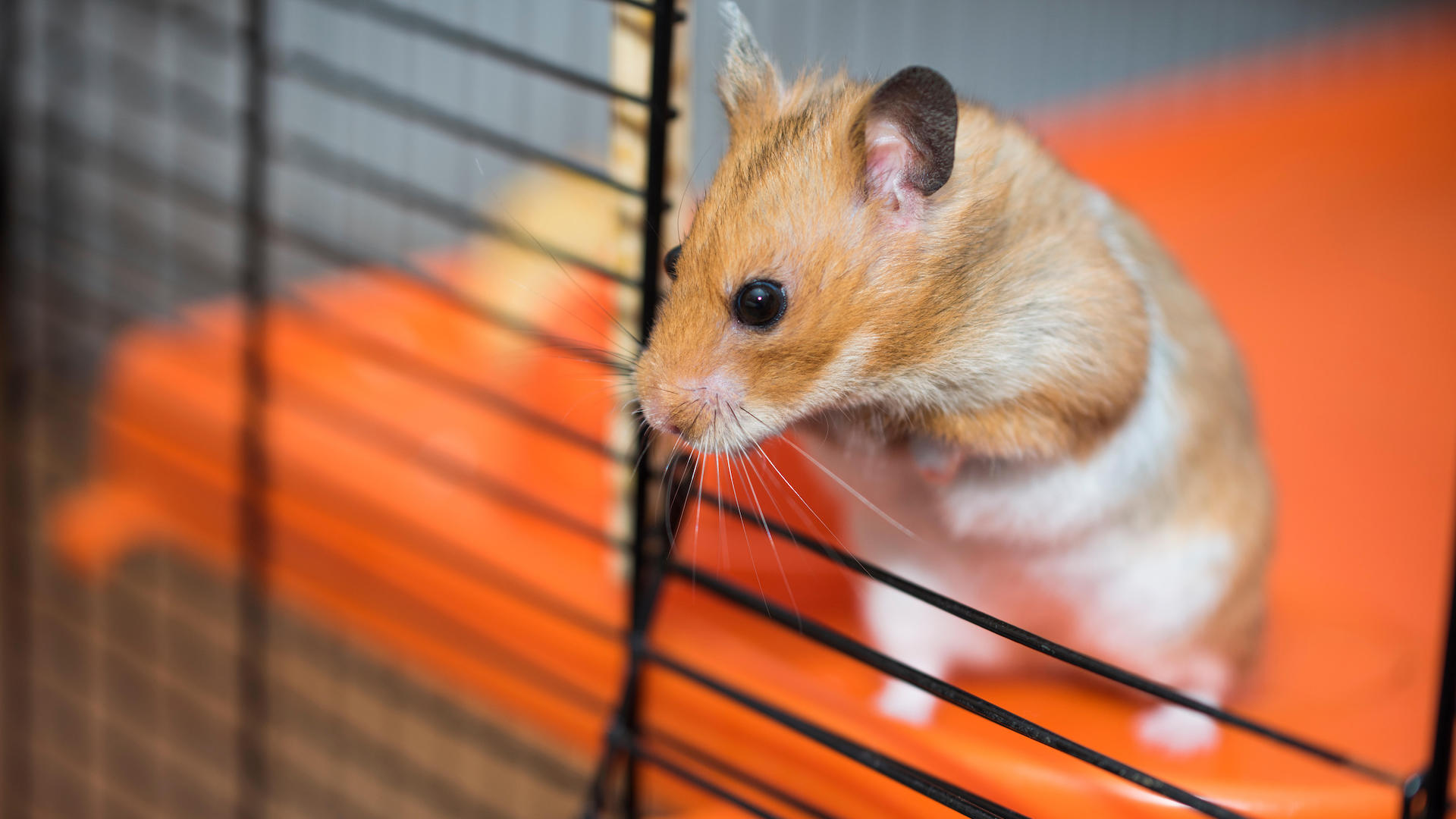
Hamsters are highly susceptible to stress, which can manifest itself in several ways. They may lose patches of fur, bite the cage rails, squeak uncharacteristically, or even show unexpected aggression. Make sure their environment is calm, clean, and quiet. Move their cage only when necessary, don’t wear unfamiliar scents around them, limit loud activities to a minimum, and make sure they have plenty of toys and activities to keep them busy in their home.
Familiarize yourself with what is normal for your hamster and be aware of the signs of a stressed hamster to help your tiny friend.
28. Quiet retreat
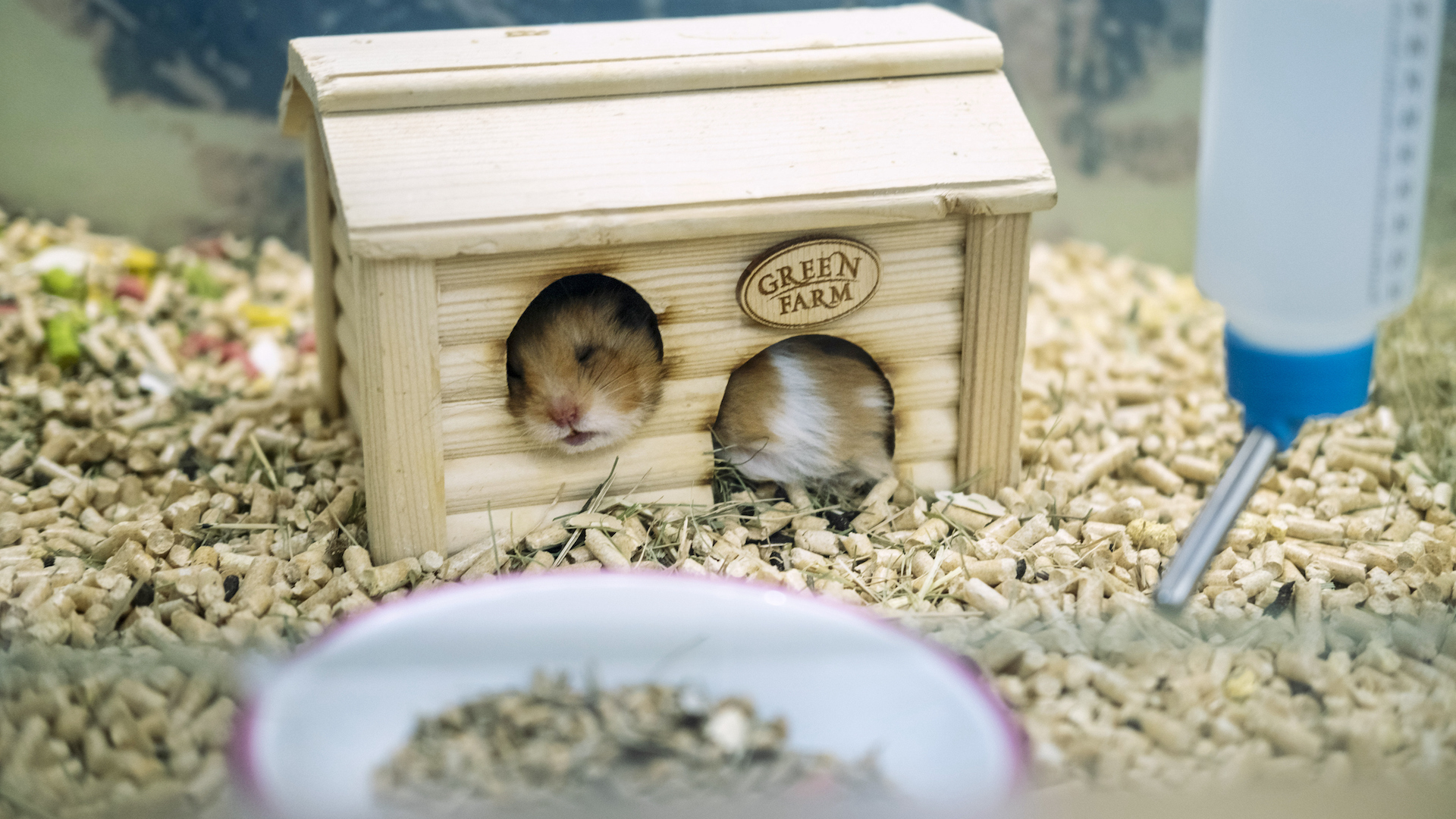
Hamsters need a cozy den to sleep in. They are likely to pull bedding in to make it soft and warm, so make sure it’s sufficiently big that they can move around and add some bedding.
It doesn’t have to be a state-of-the-art home – most hamsters are happy with a cardboard box, as long as it provides shelter (with a roof) and security. Bear in mind with homemade shelters such as cardboard, they may well chew the walls. But isn’t that part of the fun?
29. Time to tame
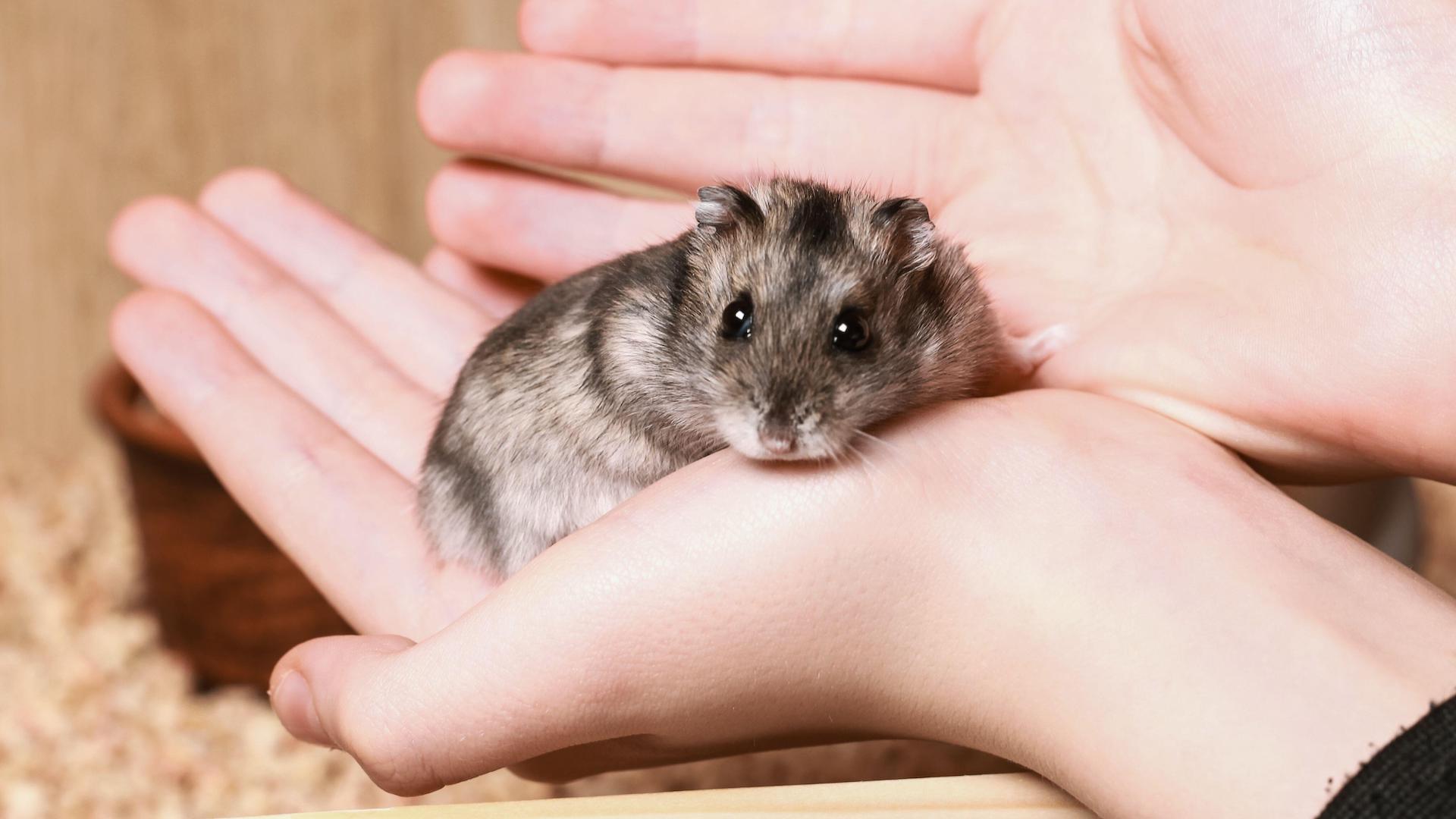
Take your time taming your hamster. They don’t arrive fully tamed! They need to get used to you, how you smell, and being handled. Start off by feeding them little titbits and seeing if they will take them from your hand – this is a great sign. When you first pick them up, it’s often a good idea to do so out of the cage, because they are likely to view that as their territory.
You can have a box in the cage which you can remove when the hamster is in it and then he is more likely to be receptive to being handled from there rather than in his den.
30. Hamster houdinis
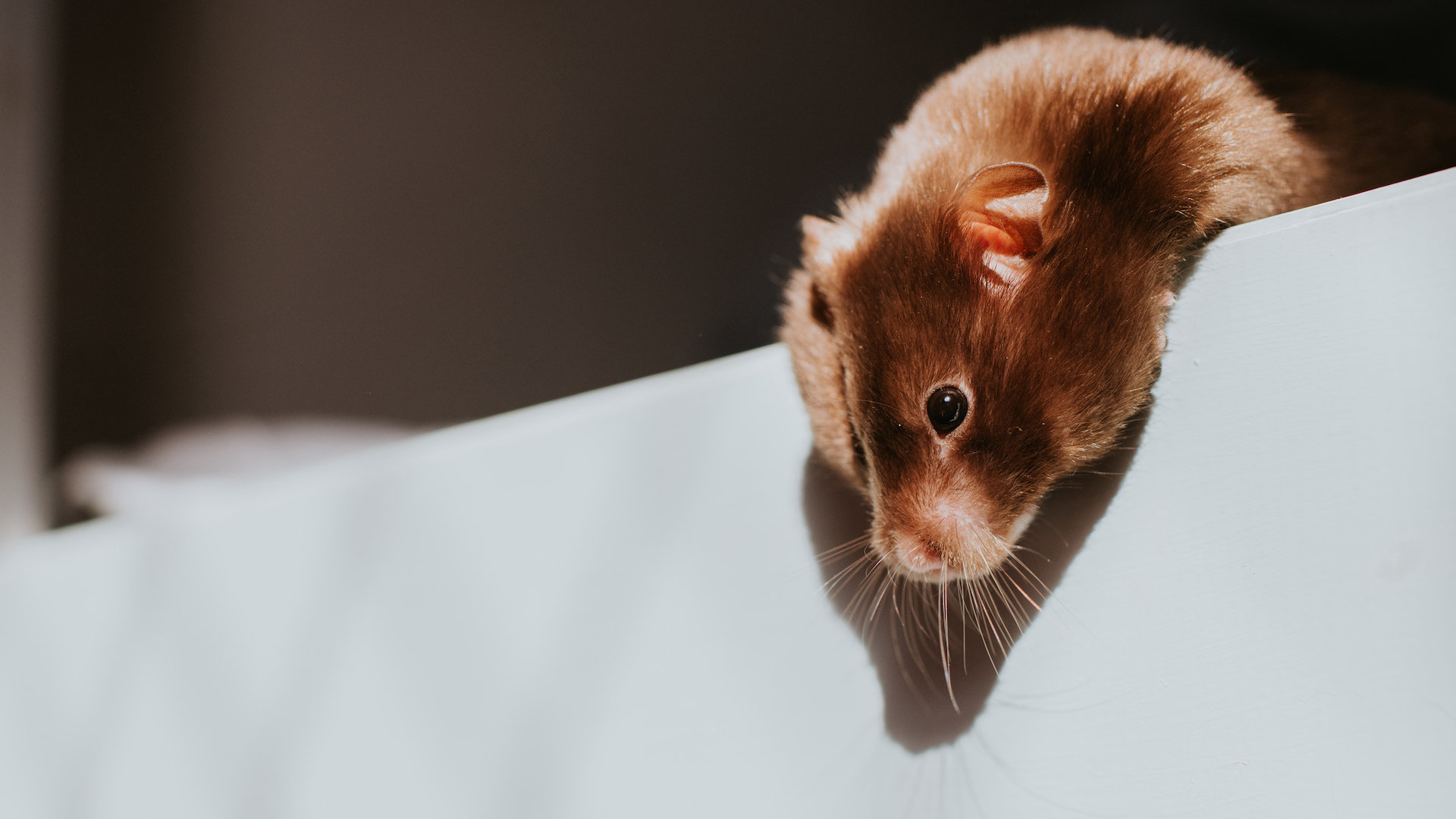
There are dozens of stories of pet hamsters escaping their enclosure, living wild in the bedroom or utility room only to be found, safe and well, weeks or even months later. Hamsters are brilliant escape artists. If they can find a little nook or cranny through which to escape, they will do so and set off on an adventure. Make sure you handle them in an enclosed area, and don’t let them run off loose as they can get into the tiniest cracks in skirting boards and you’ll struggle to retrieve them.
31. Prey animals
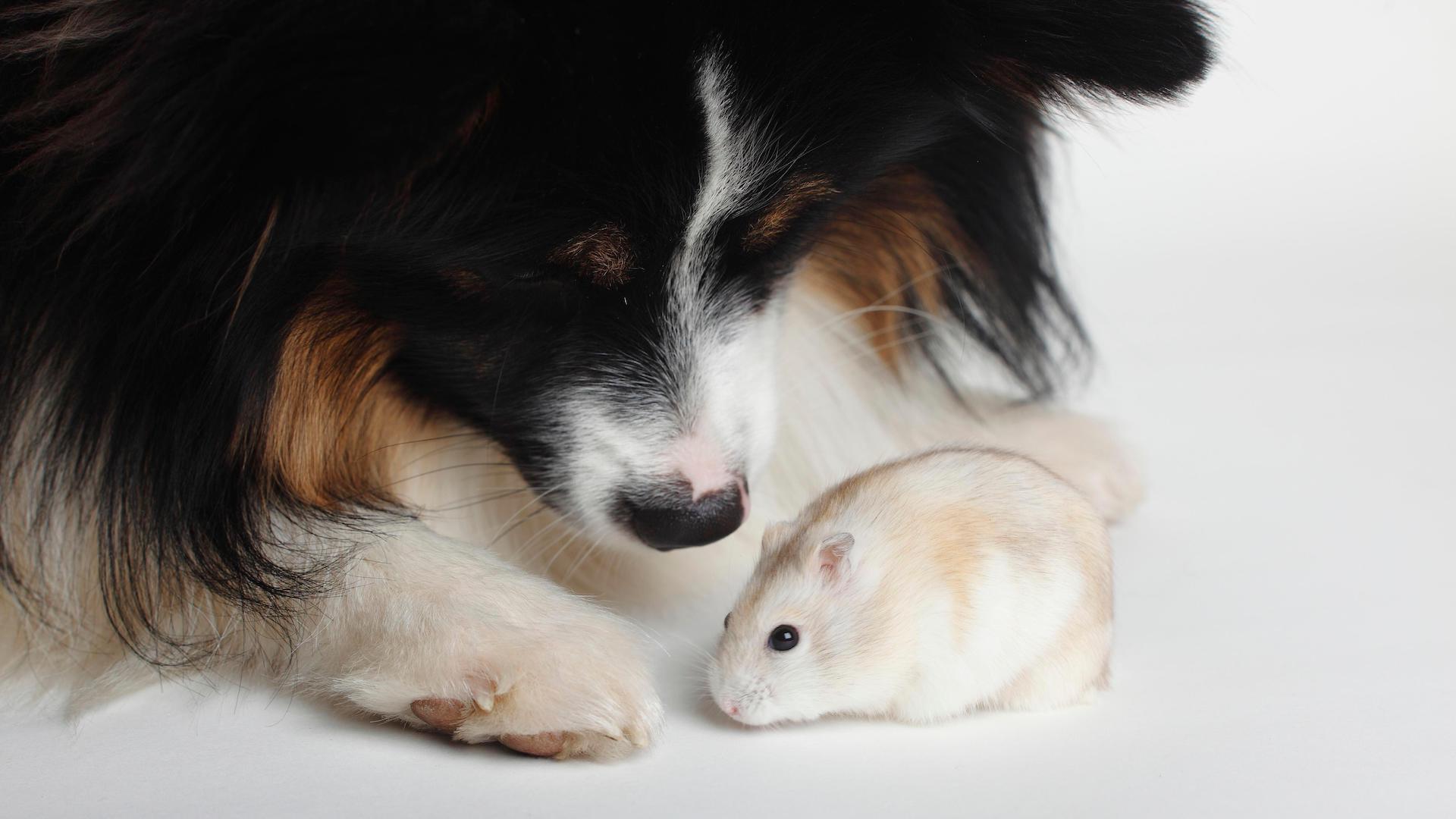
The snag with being a prey animal is two-fold. First of all, they are fair game for the resident dogs and cats, so always keep the hamster separate and not in any place where a predator might be able to stress them out – or worse still, chase him.
Secondly, as a prey animal, they are adept at hiding illnesses and weakness often until it’s too late. So, be vigilant at monitoring their behavior, condition, and appetite, and consult your vet if you have any concerns.
32. Hibernation confusion
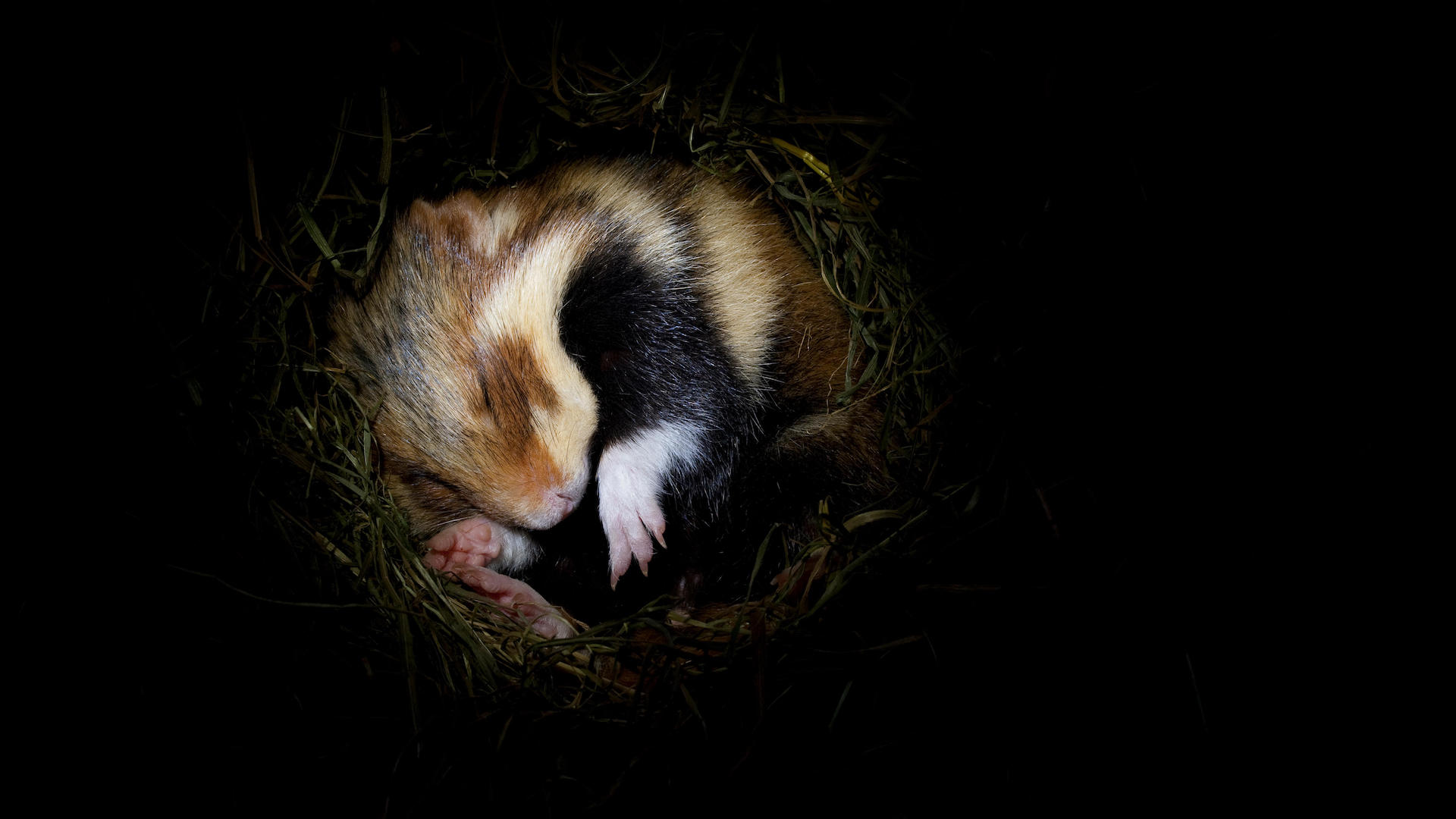
You may well ask “Do hamsters hibernate?” – especially if they seem to be spending more time asleep than usual. While hamsters do not hibernate as squirrels and hedgehogs do, they may enter a sleepy, inactive state – particularly if they get too cold or food is limited – as a way of saving energy. So while it is similar to the concept of hibernation, it typically lasts only a few hours or days at most and is known as a torpor. If this happens, increase the ambient temperature and offer food. If you have any concerns, consult a vet.
Martha is an experienced journalist working in both print and digital media. She specializes in the canine, equine and rural sphere where she has covered a wide range of topics from cloning animals and the ingredients for a perfect yard dog, to helping owners find the best canine GPS trackers on the market. When she’s not busy writing about dogs and horses, she’ll be found either aboard a horse or looking after the menagerie of pets in her care.
